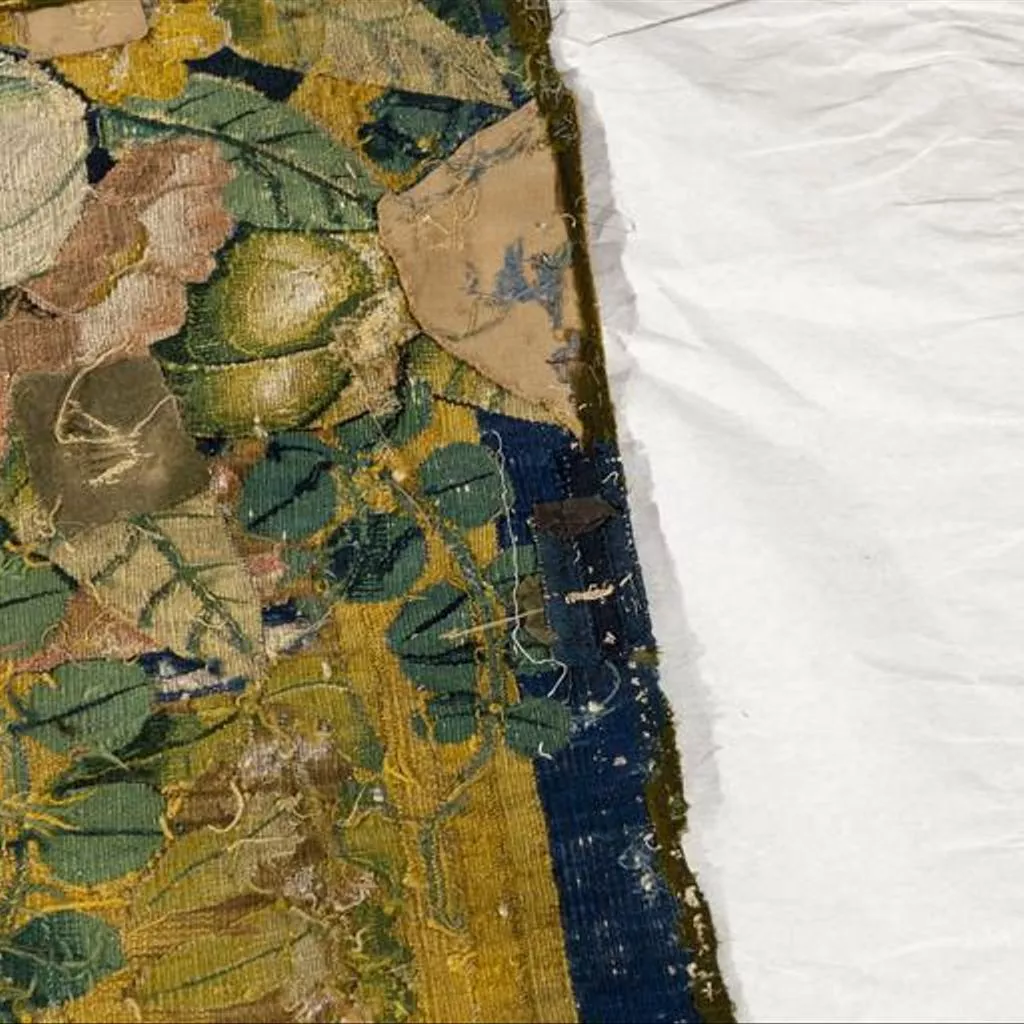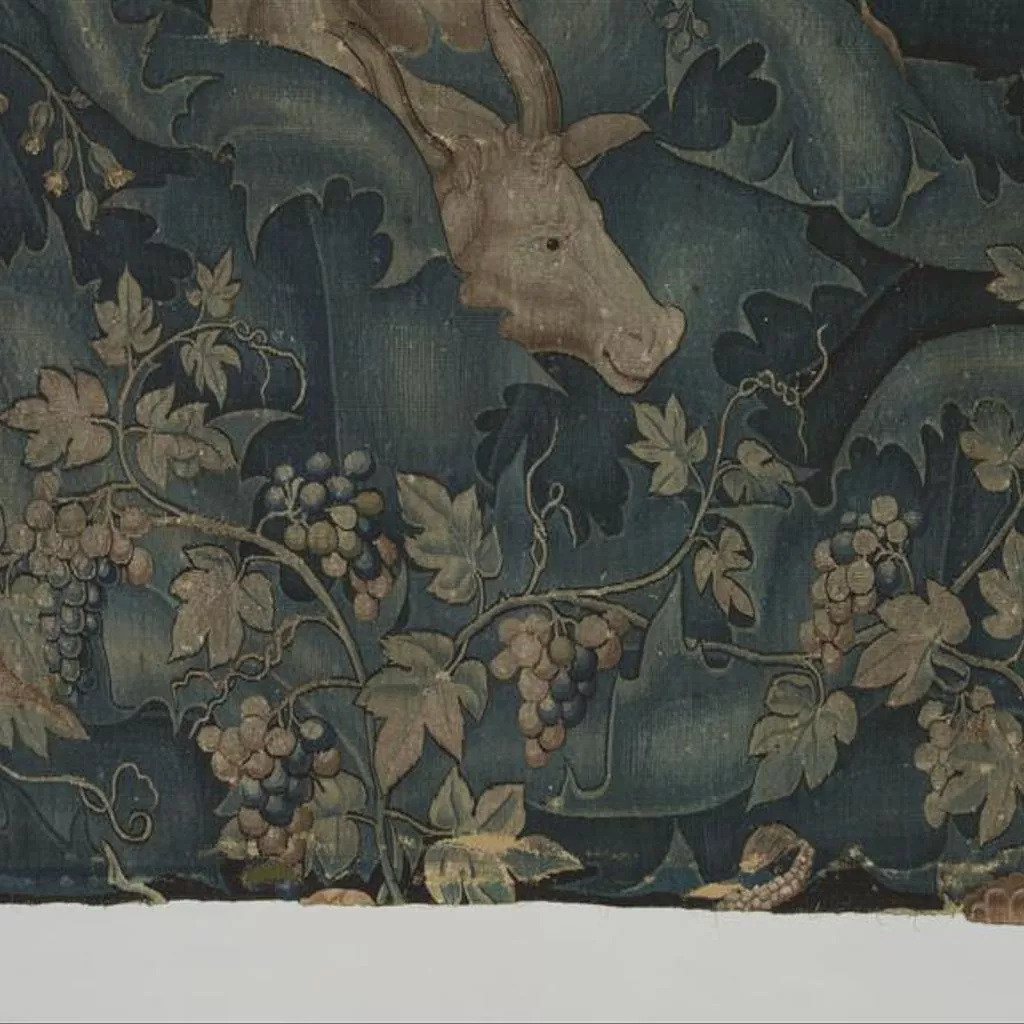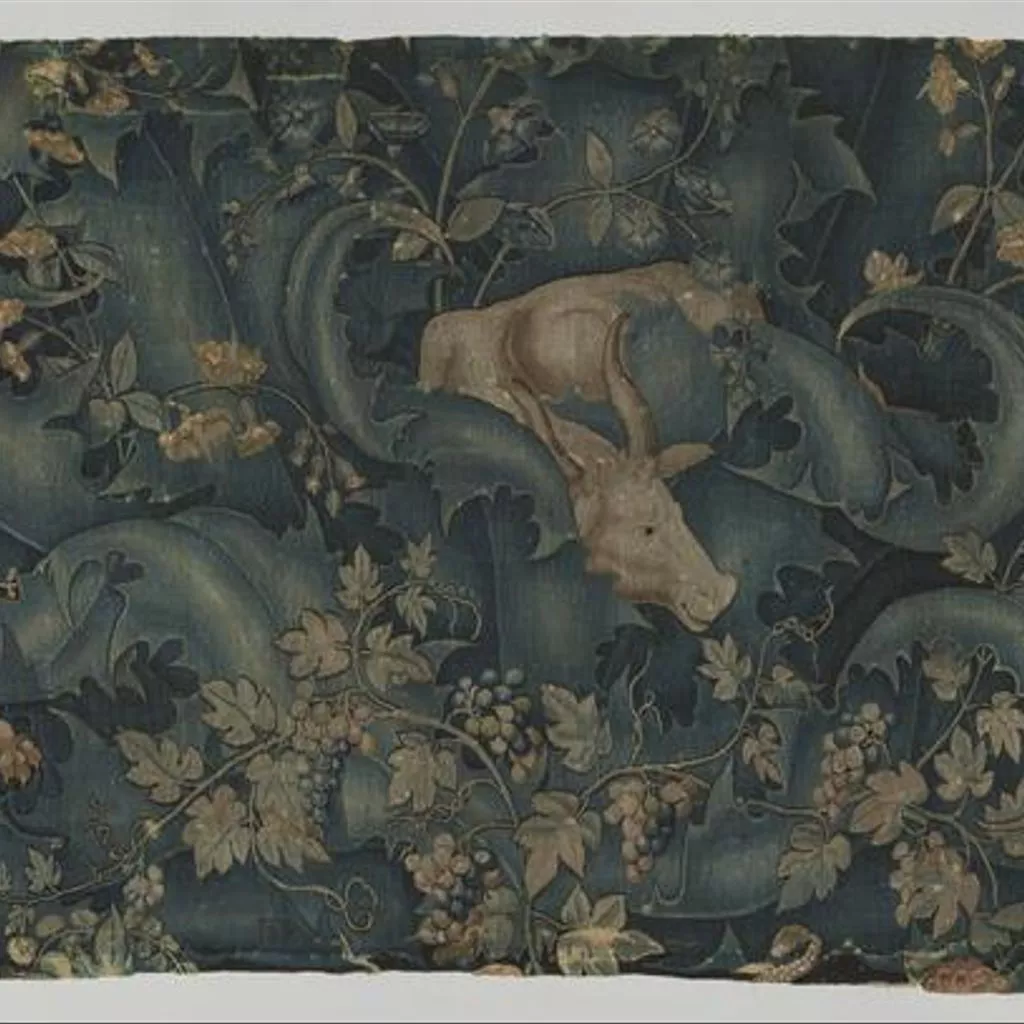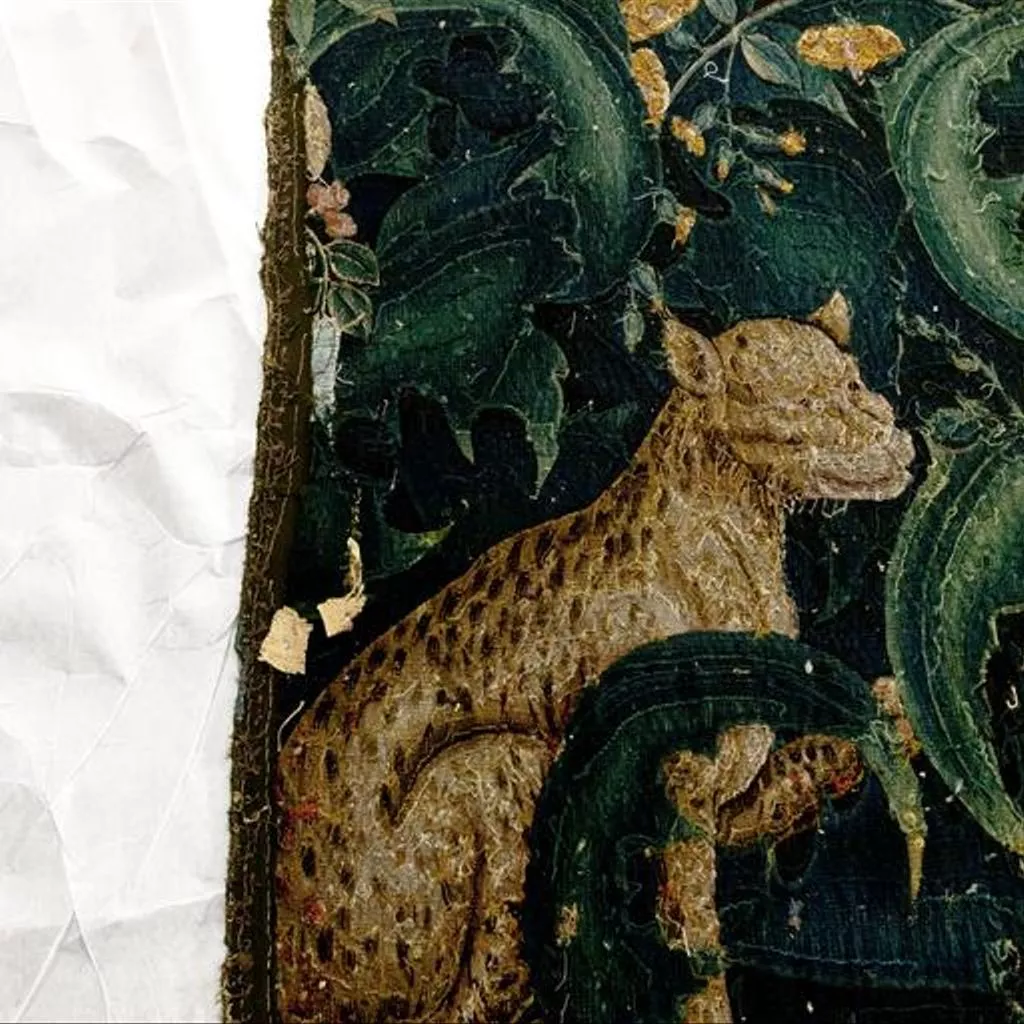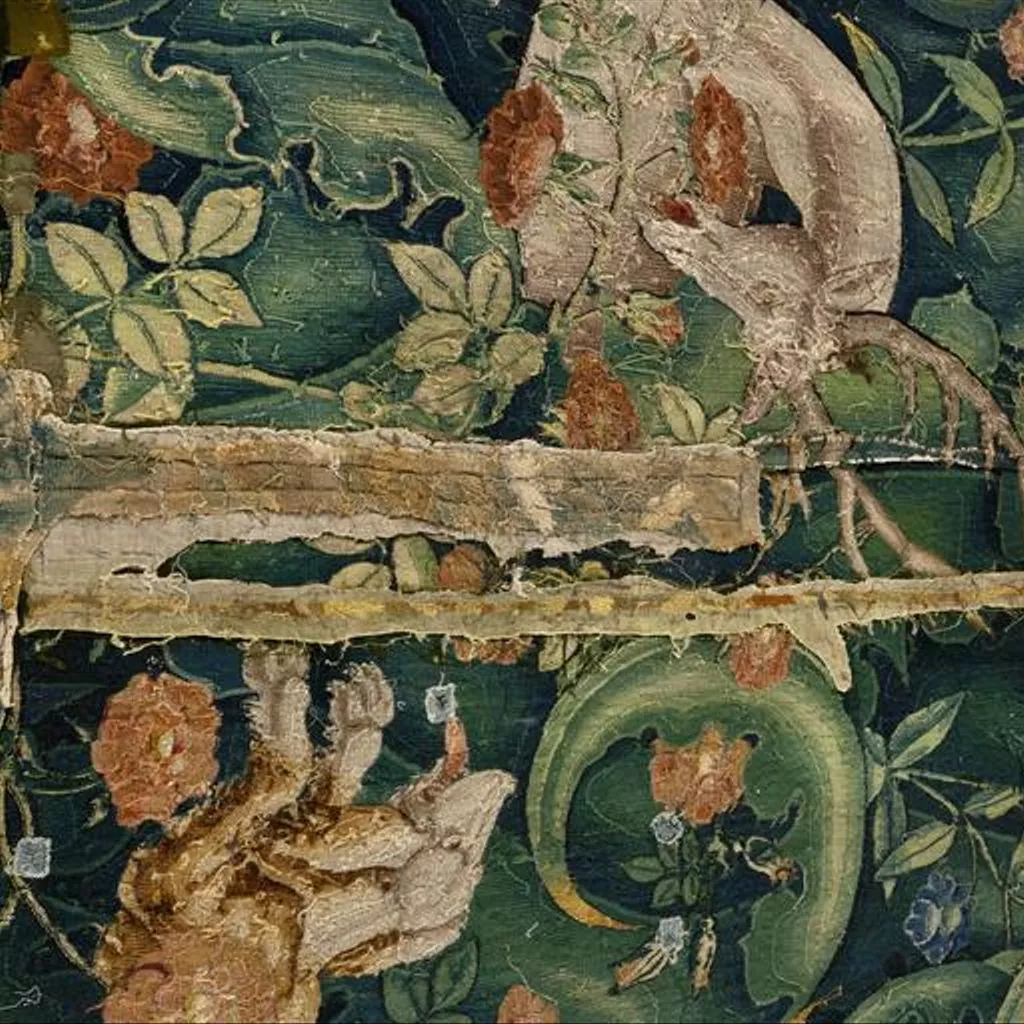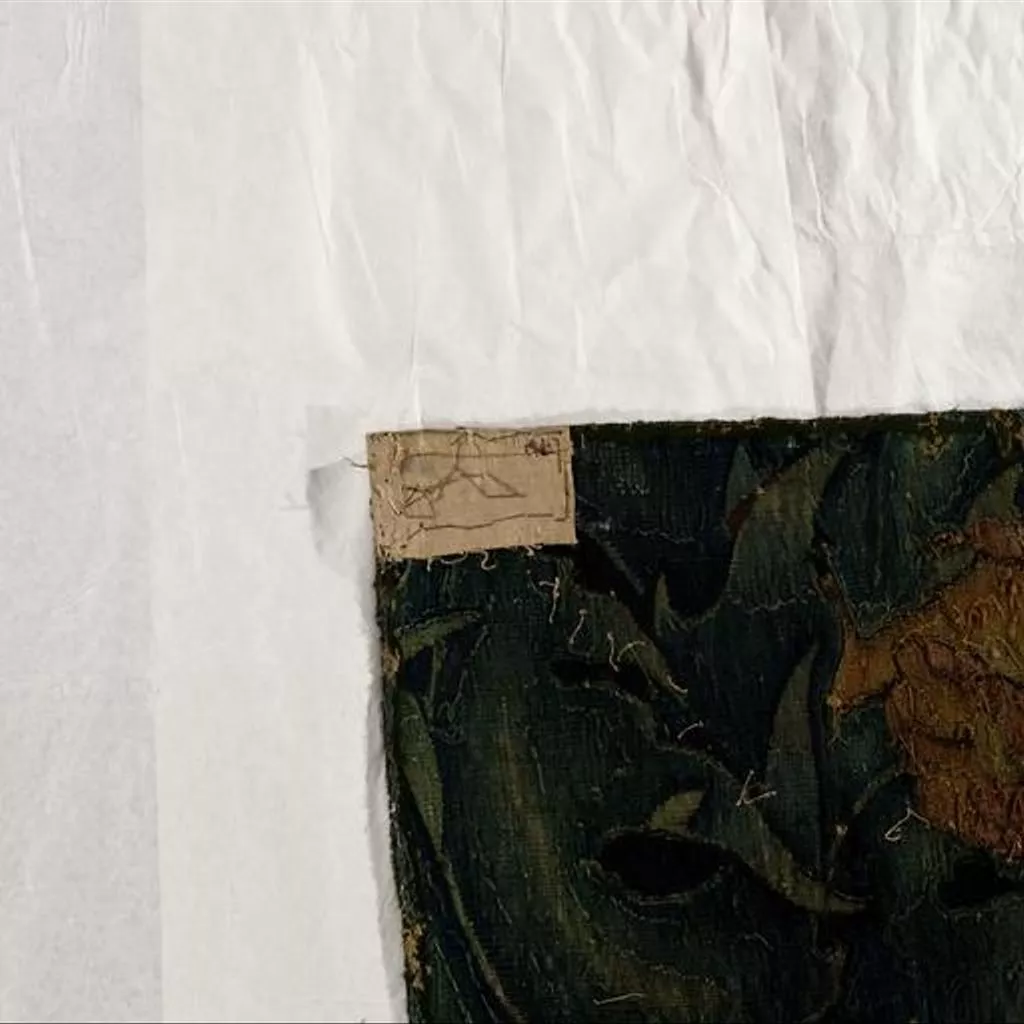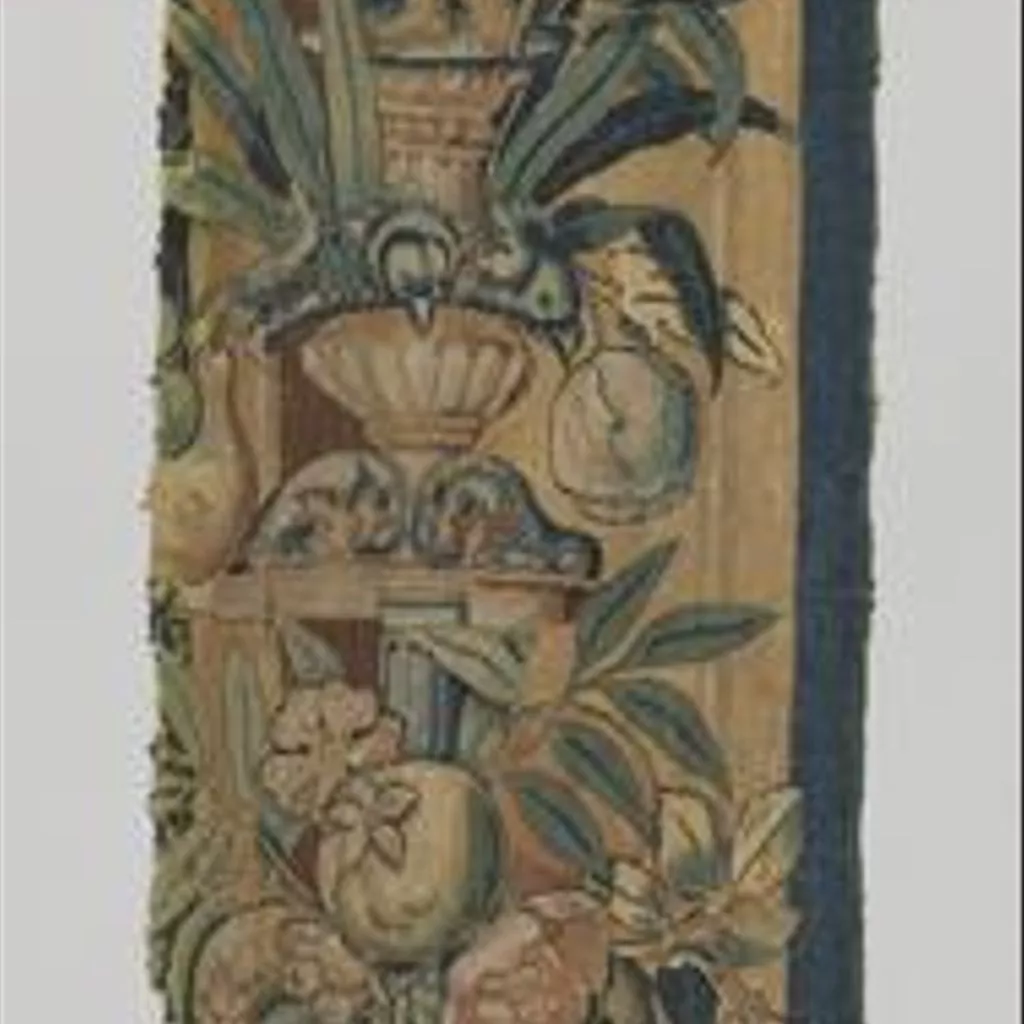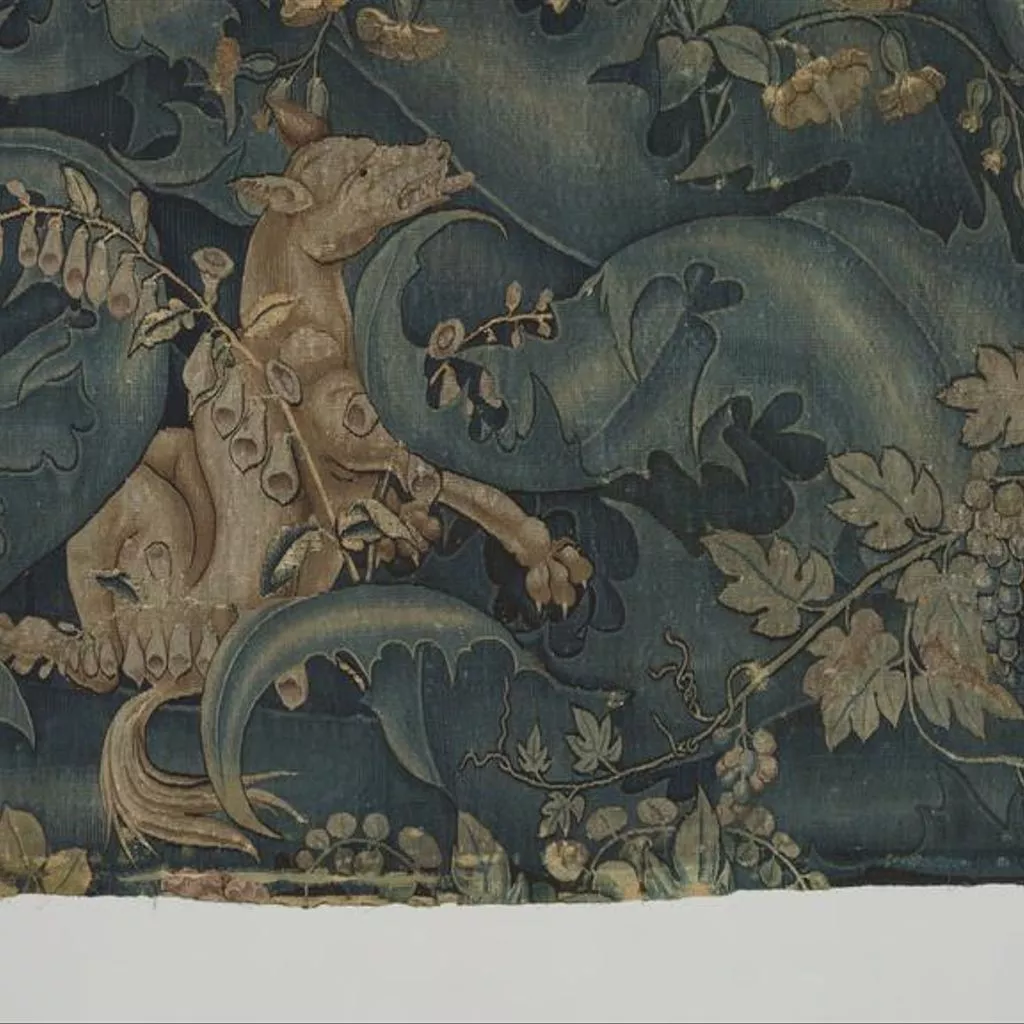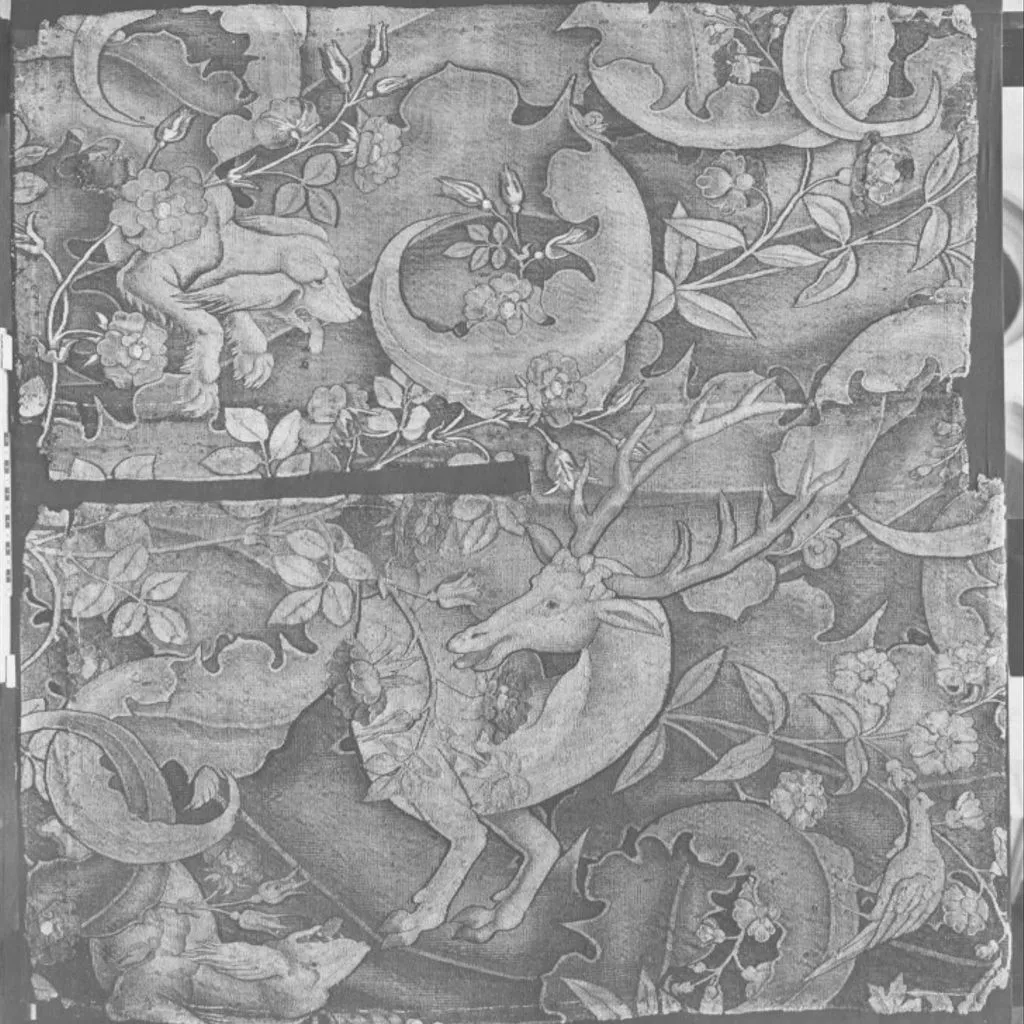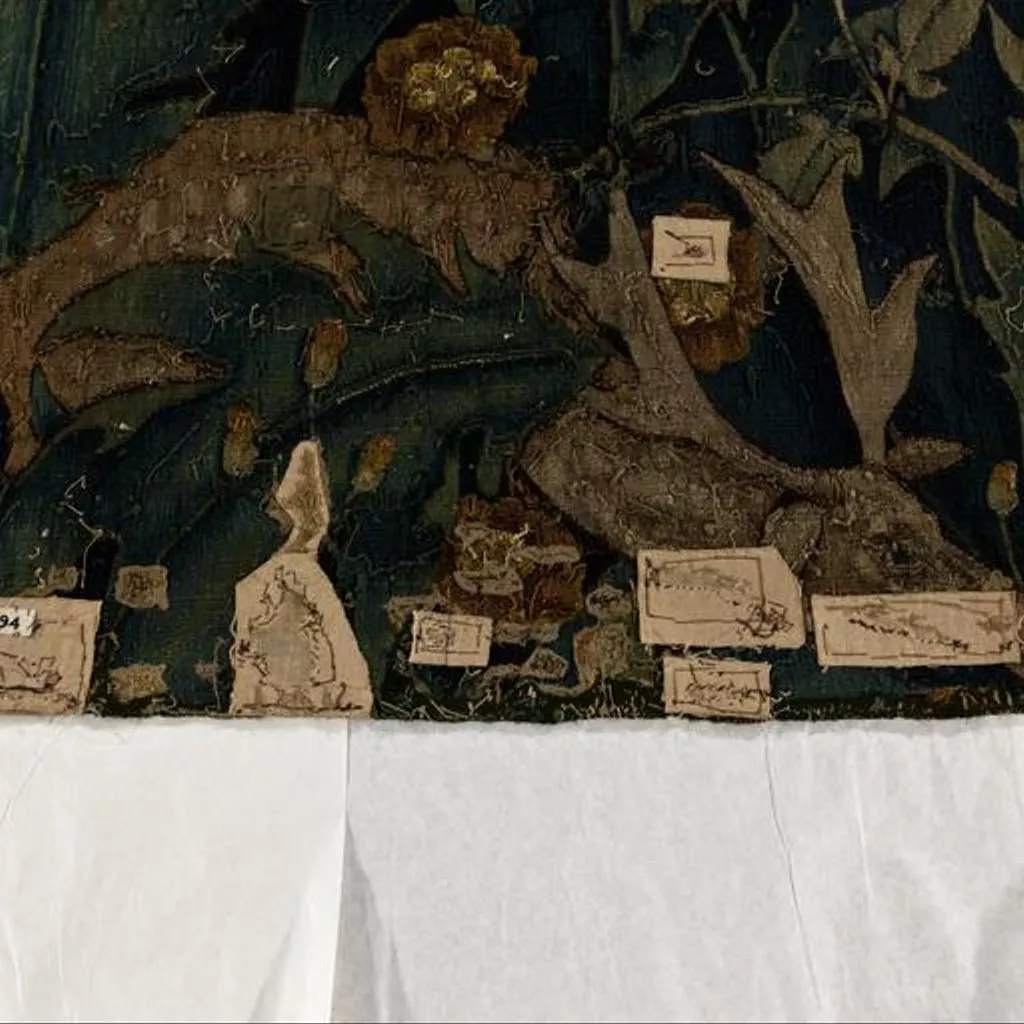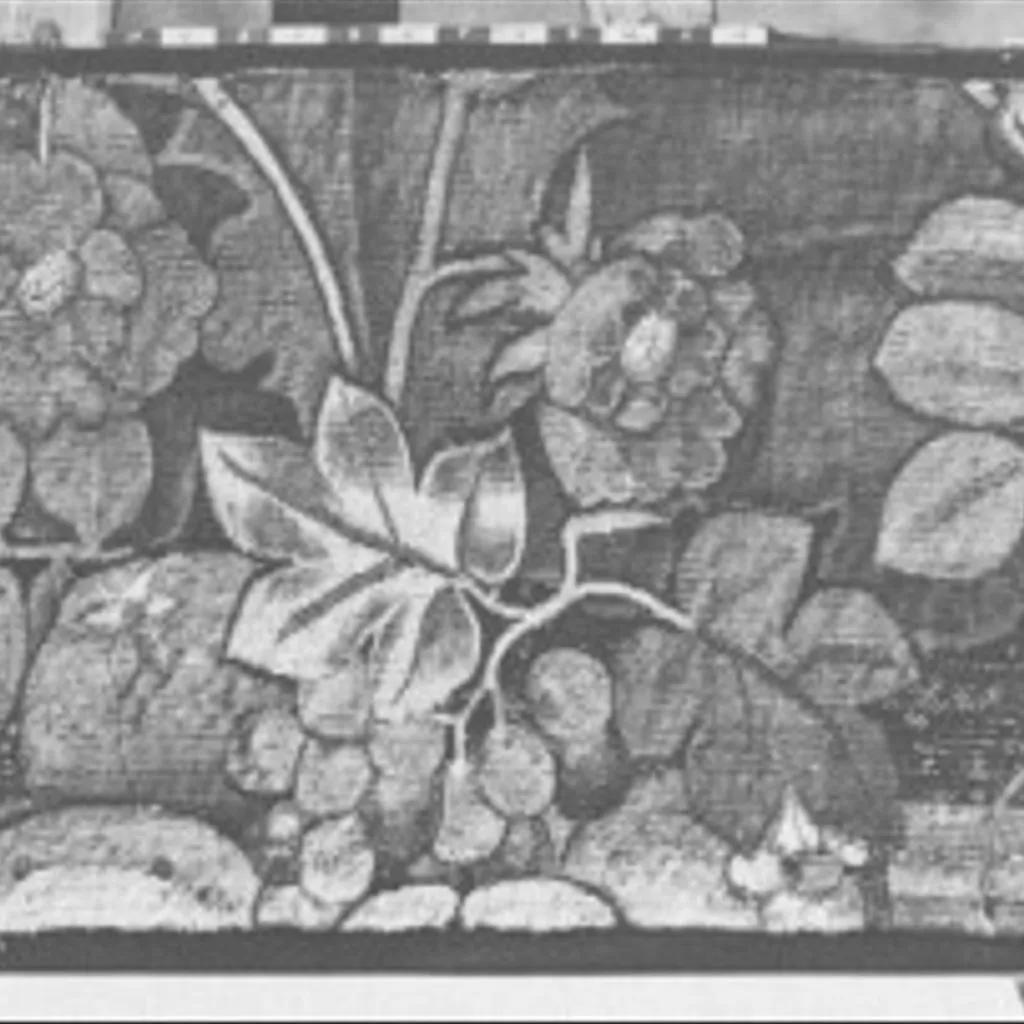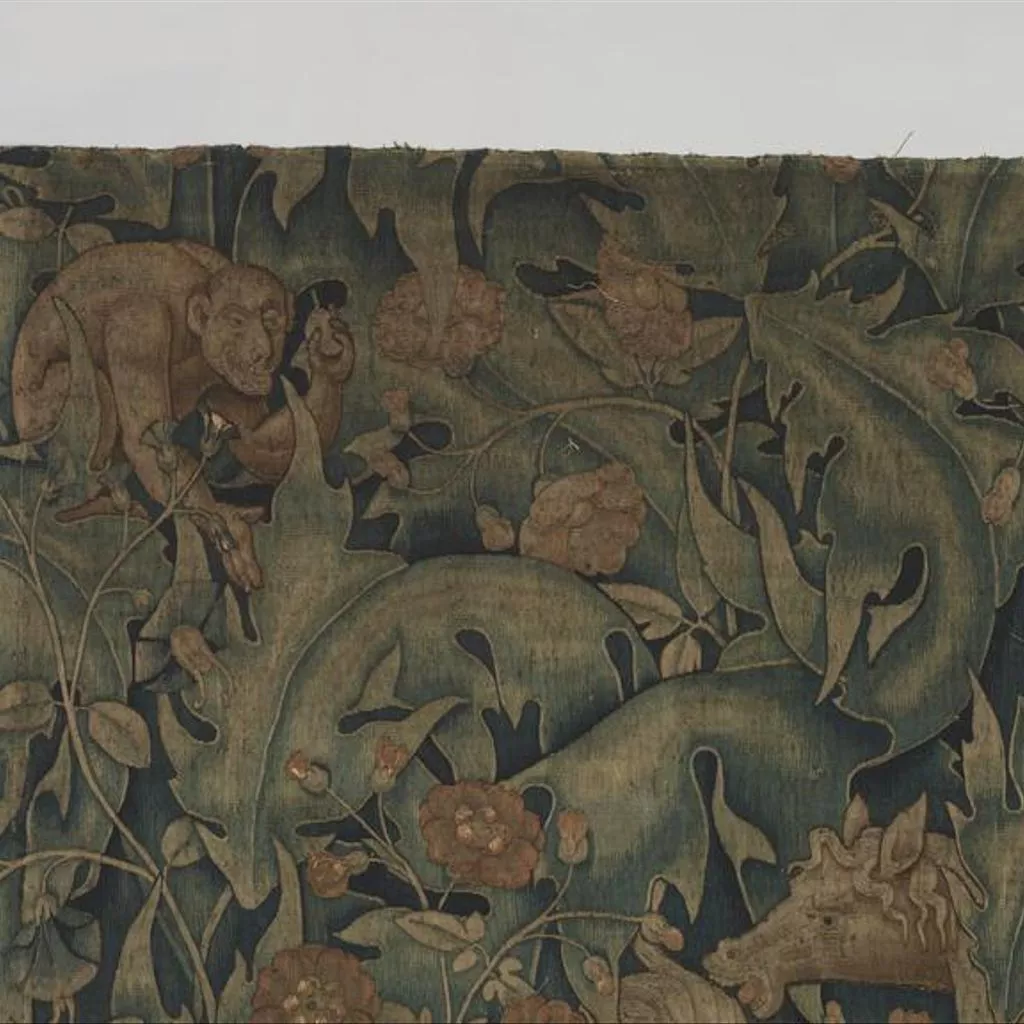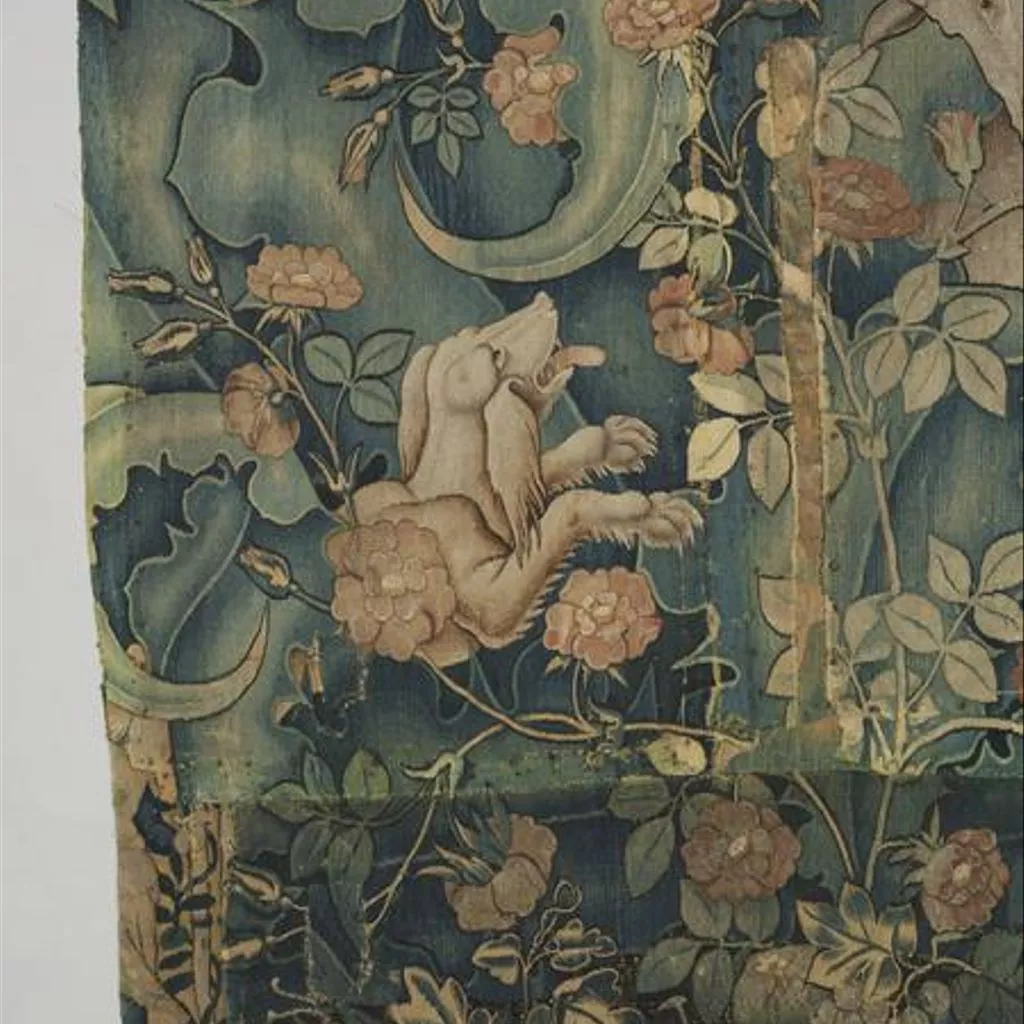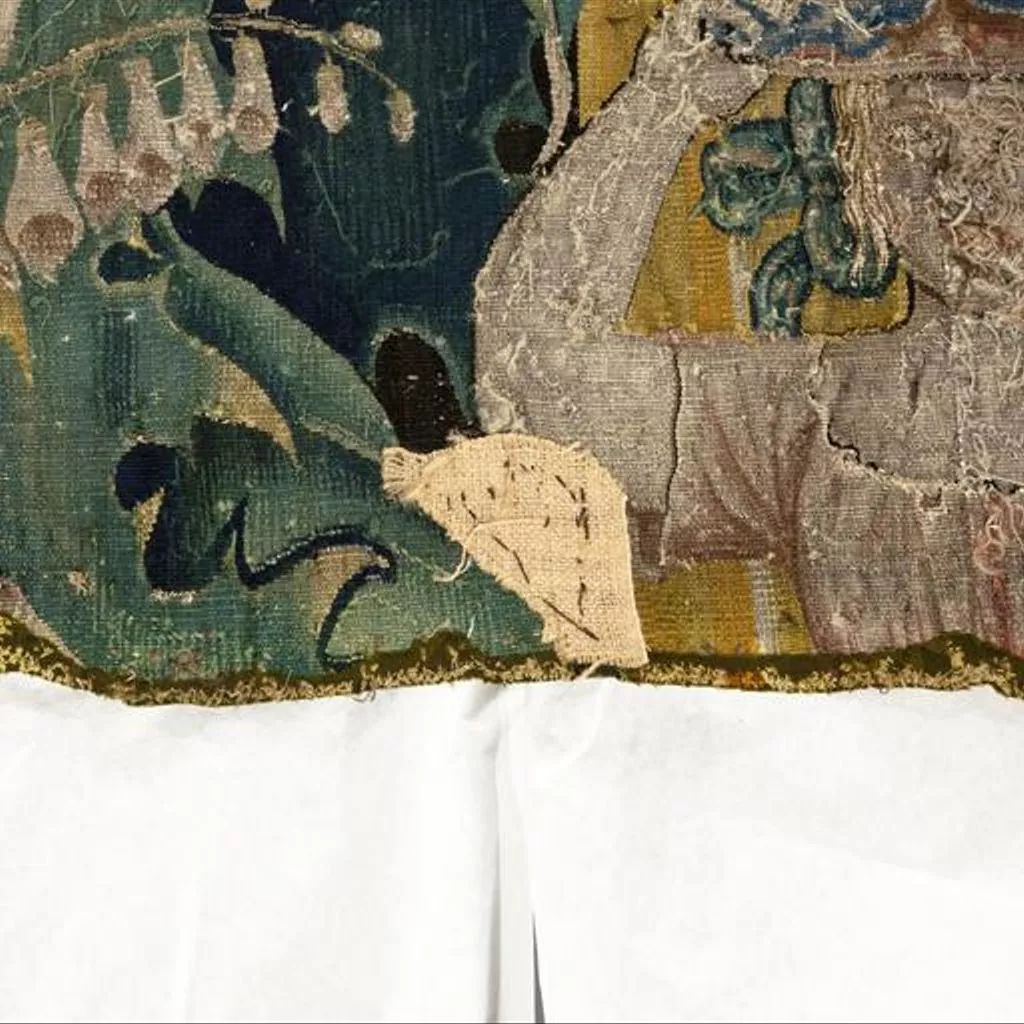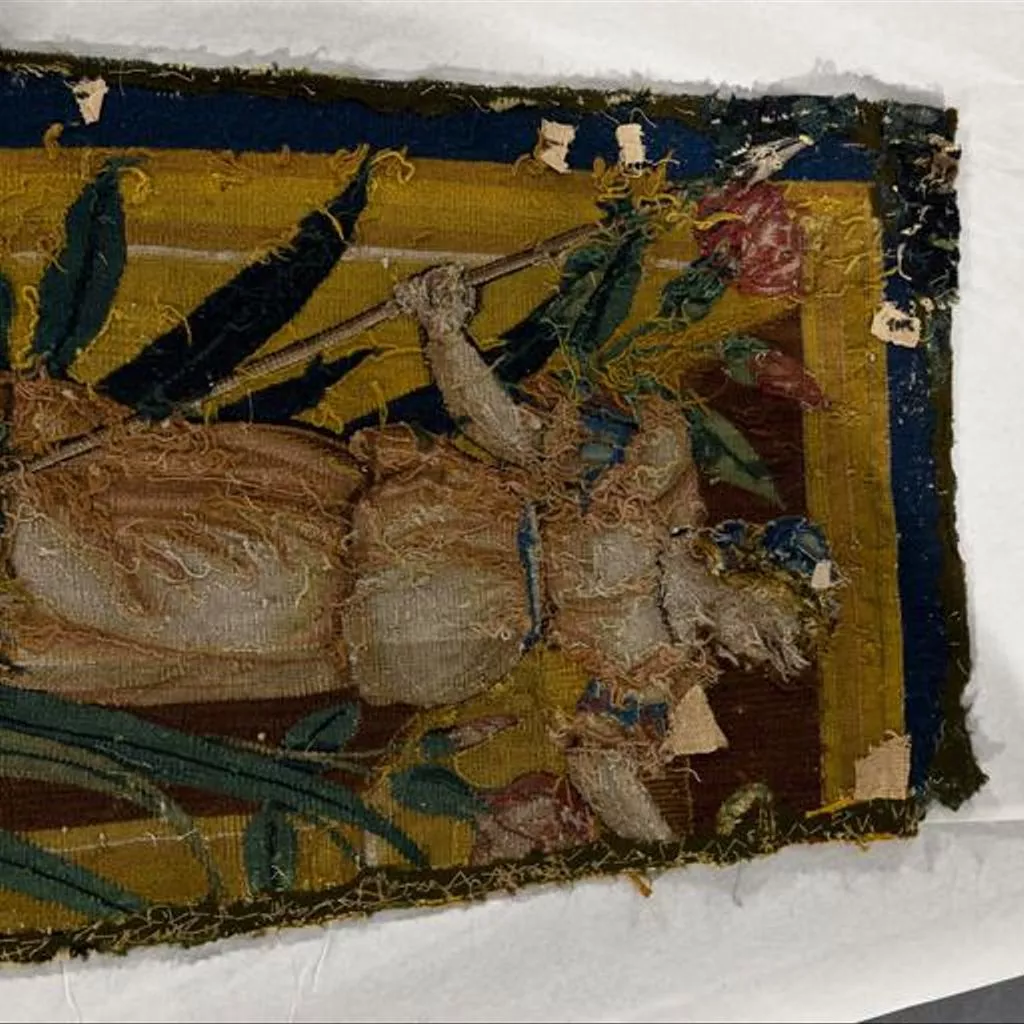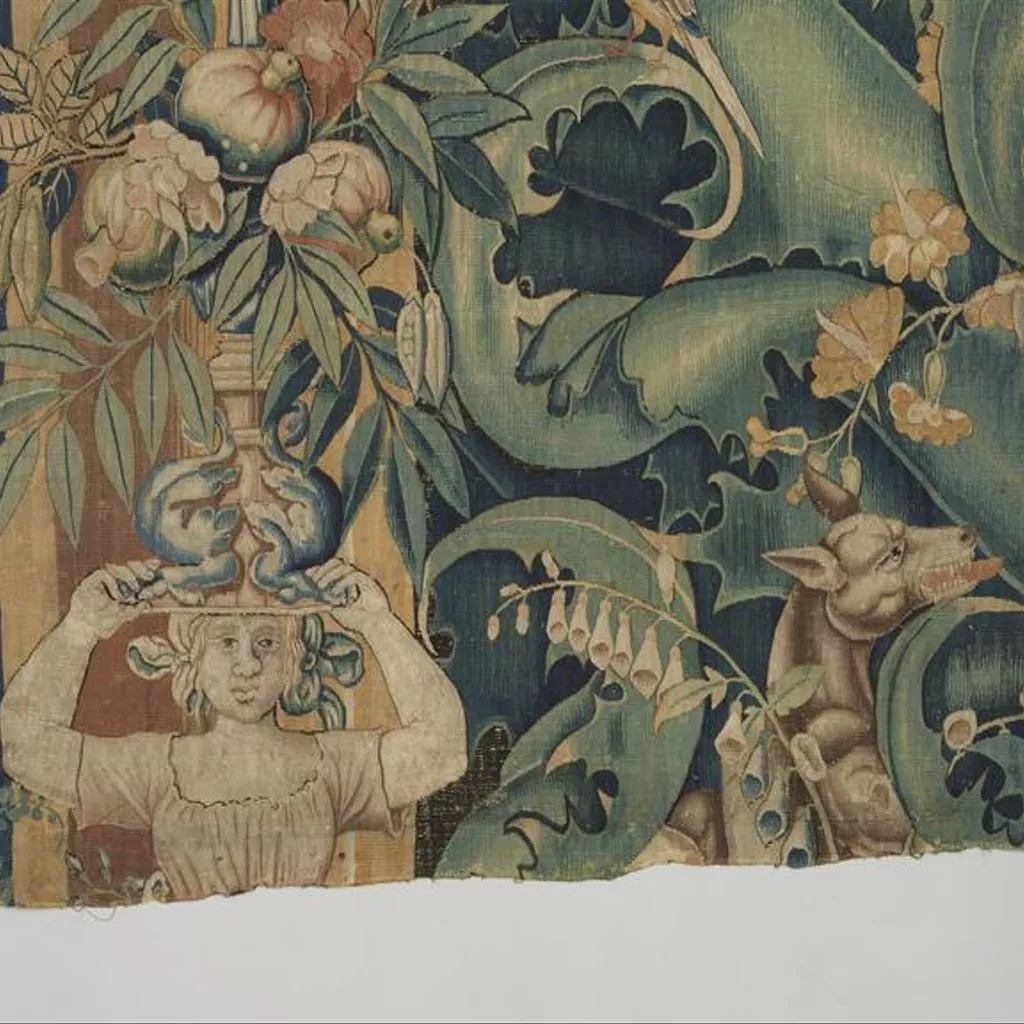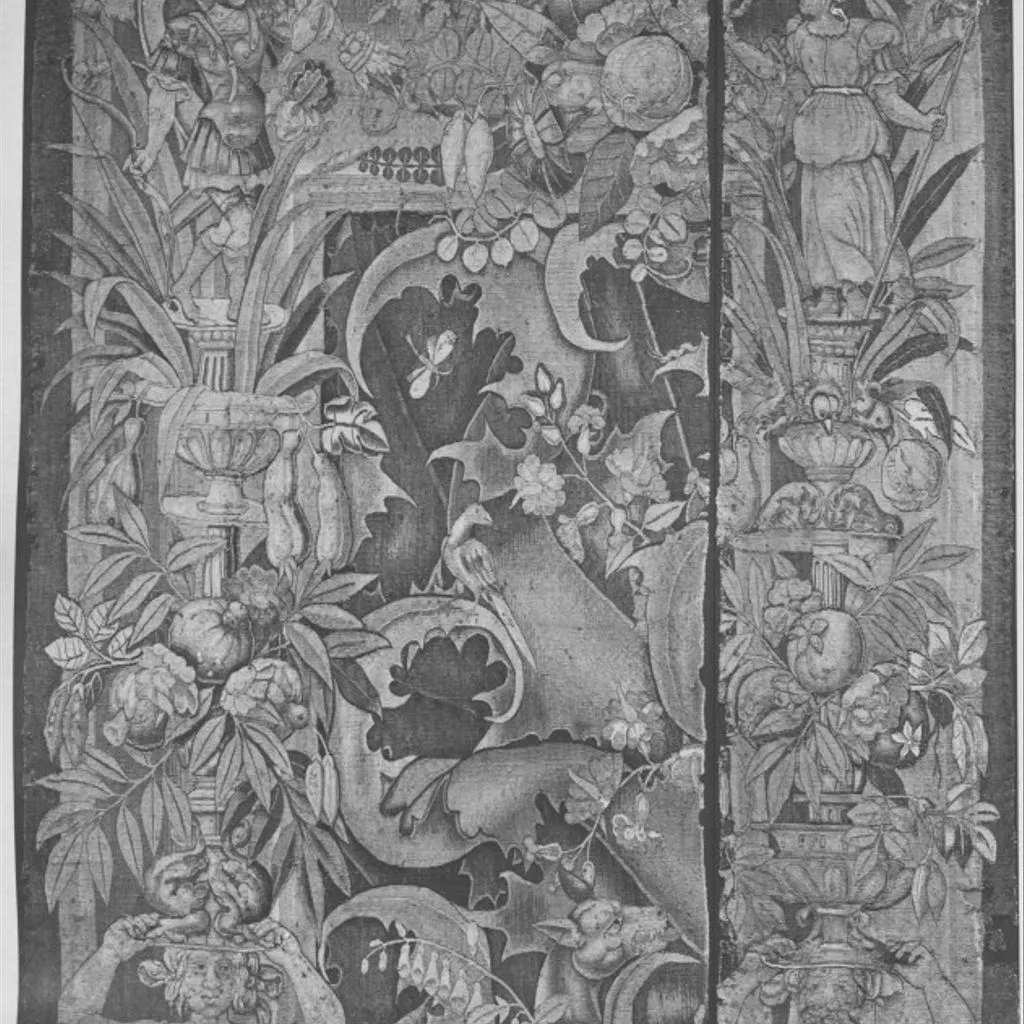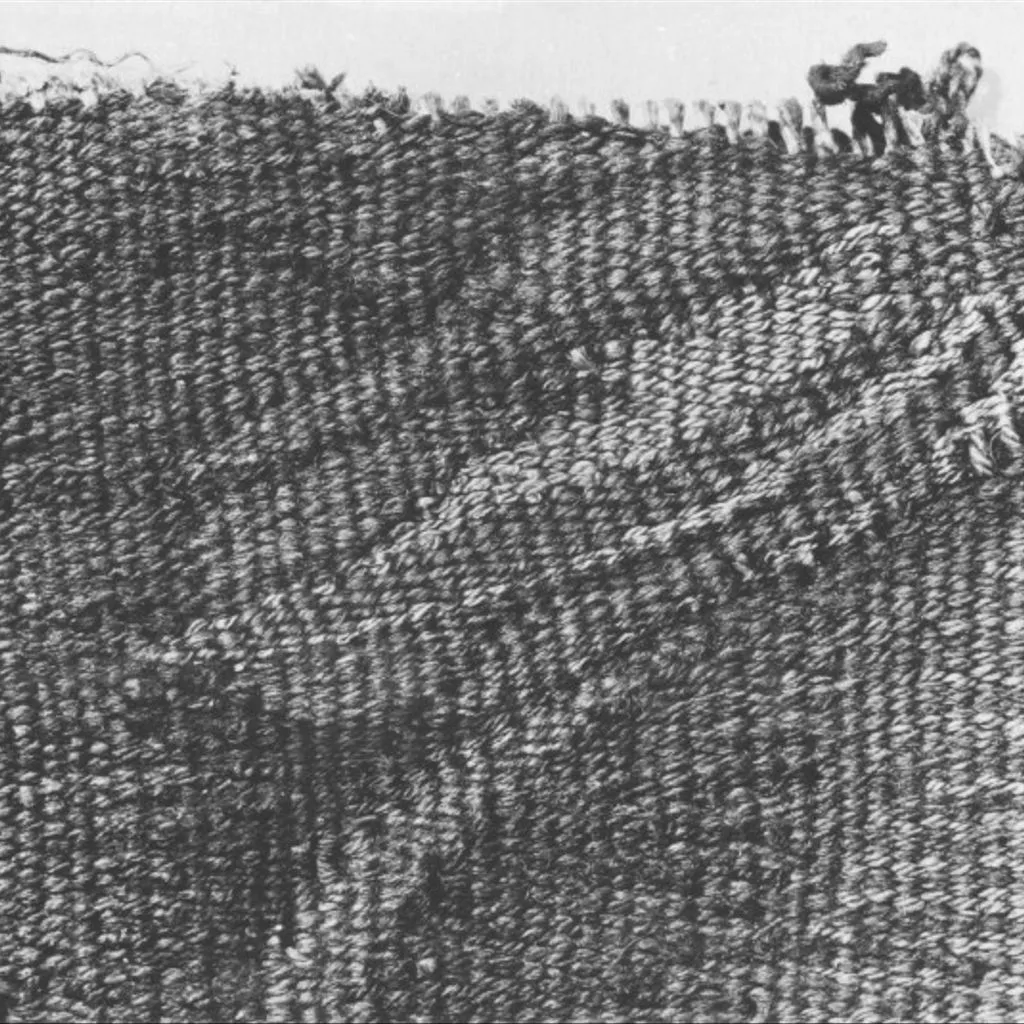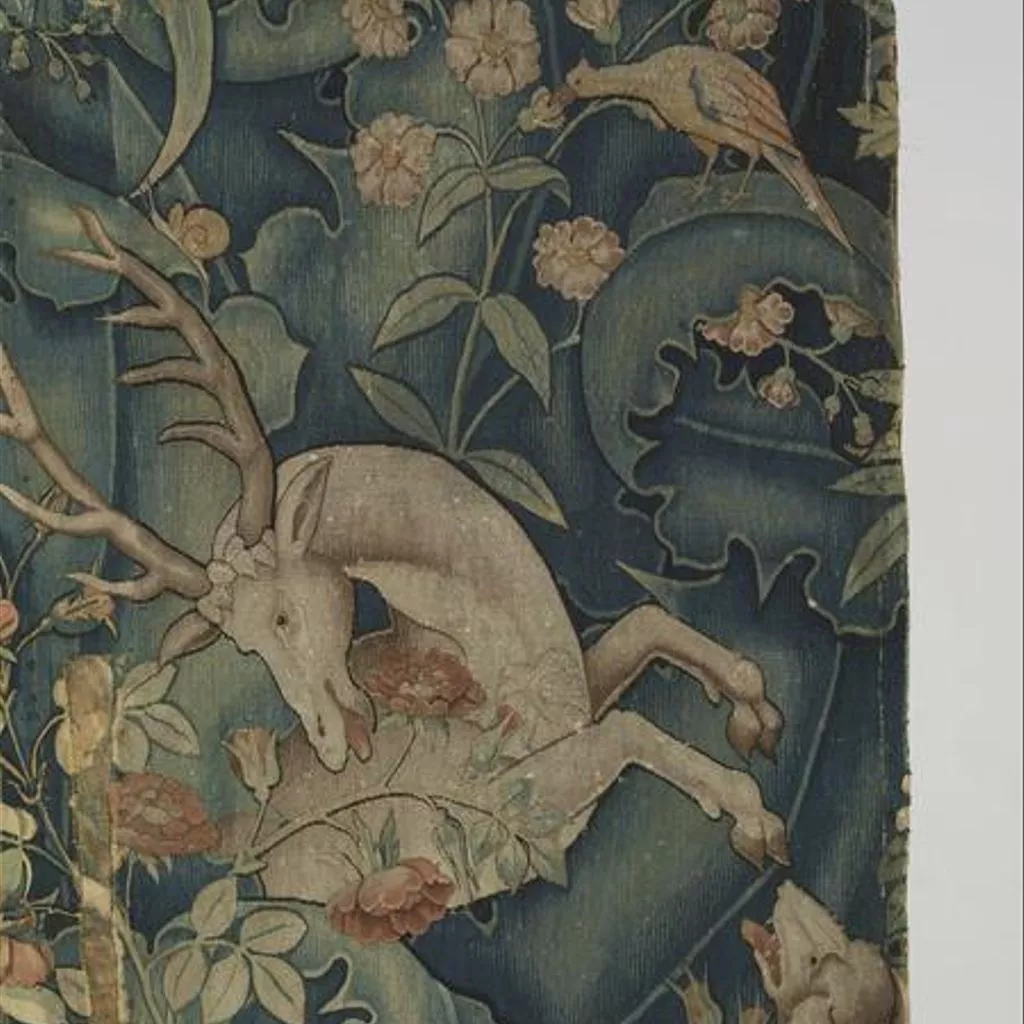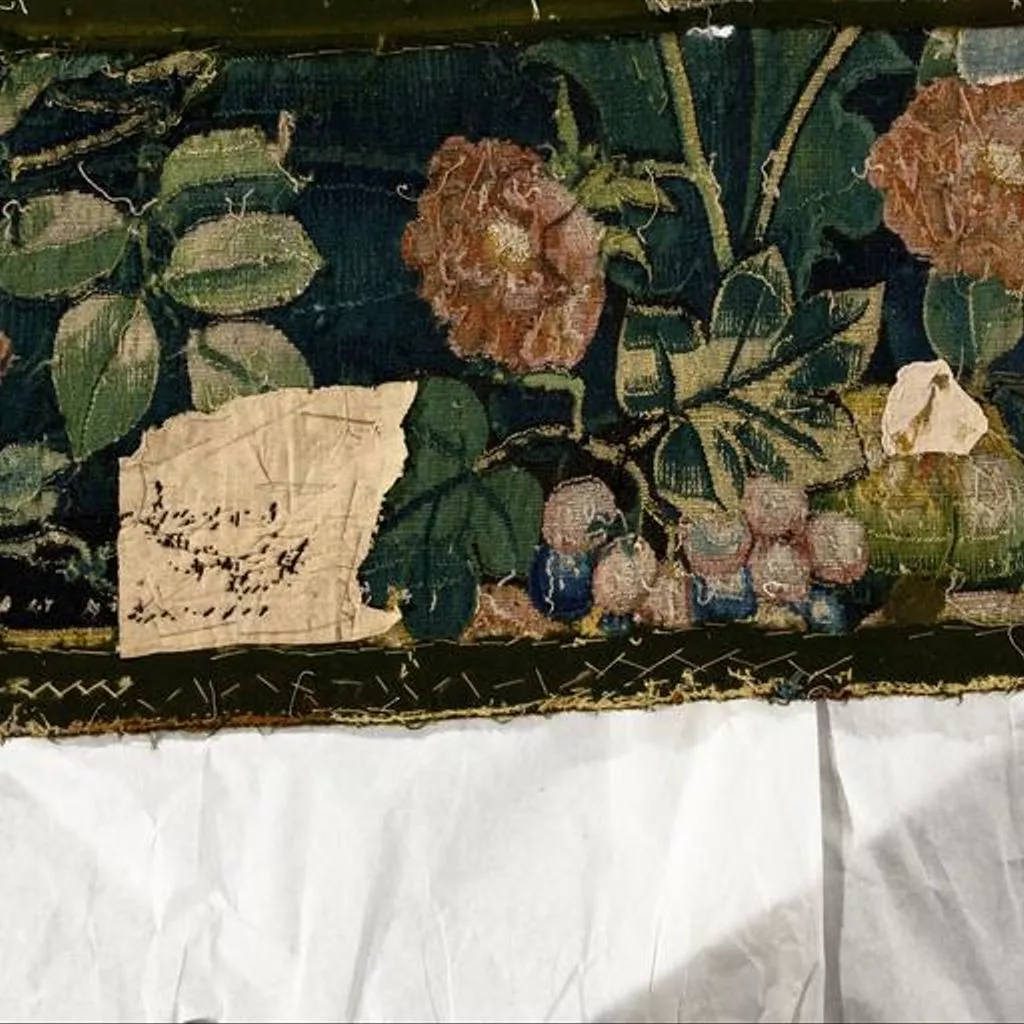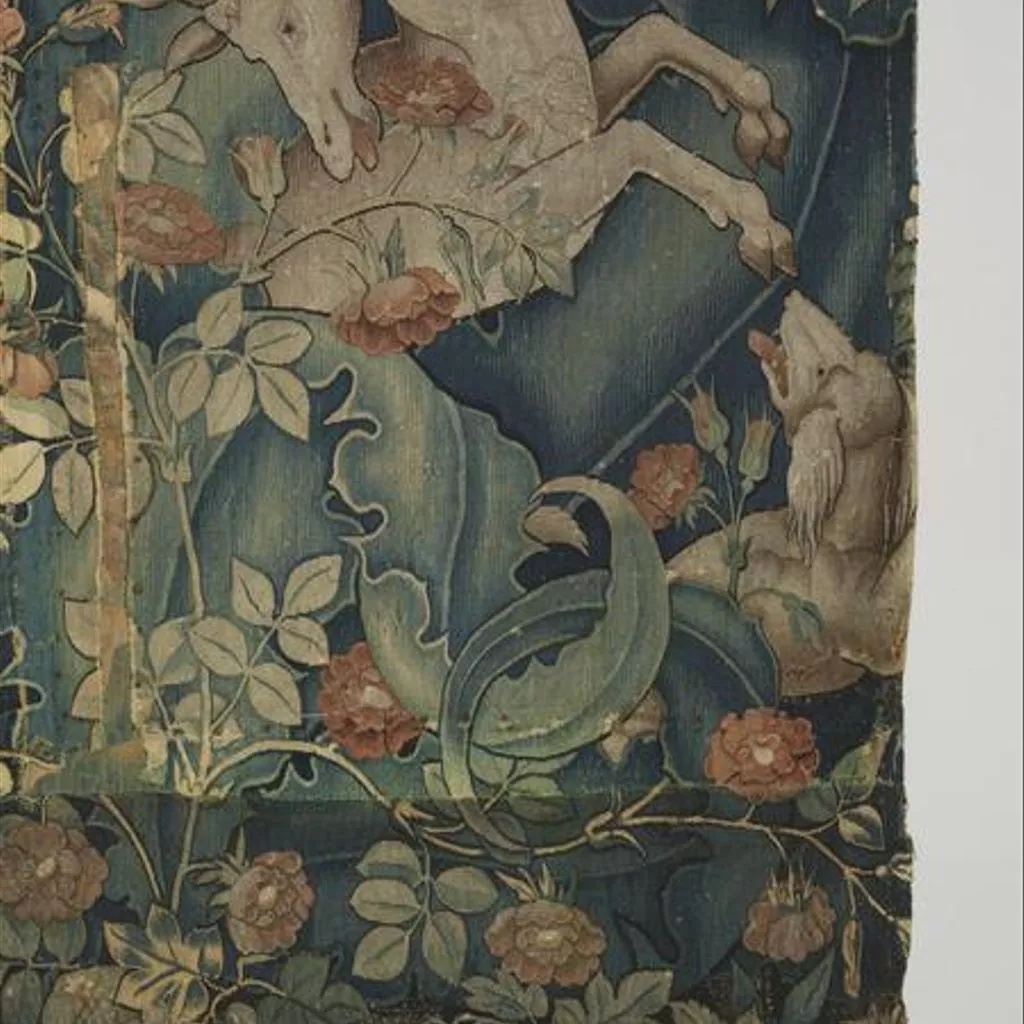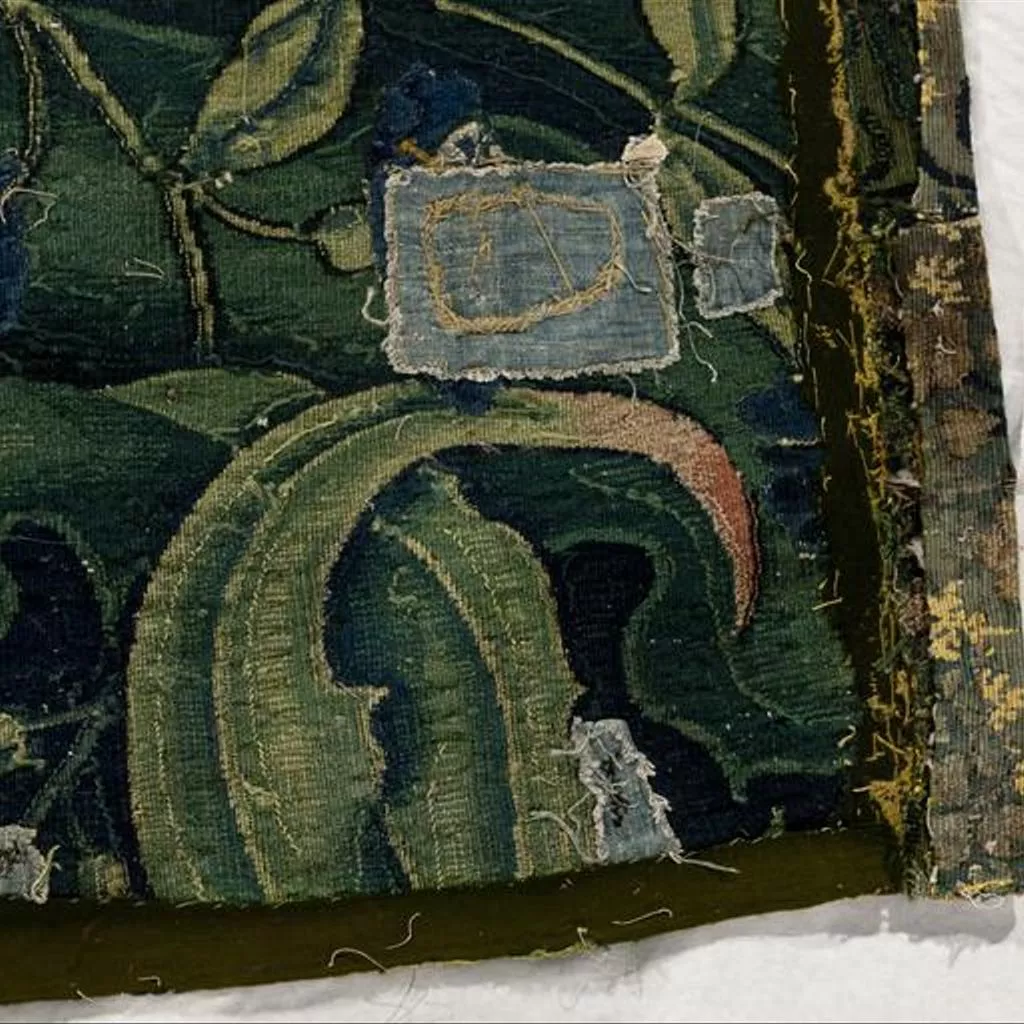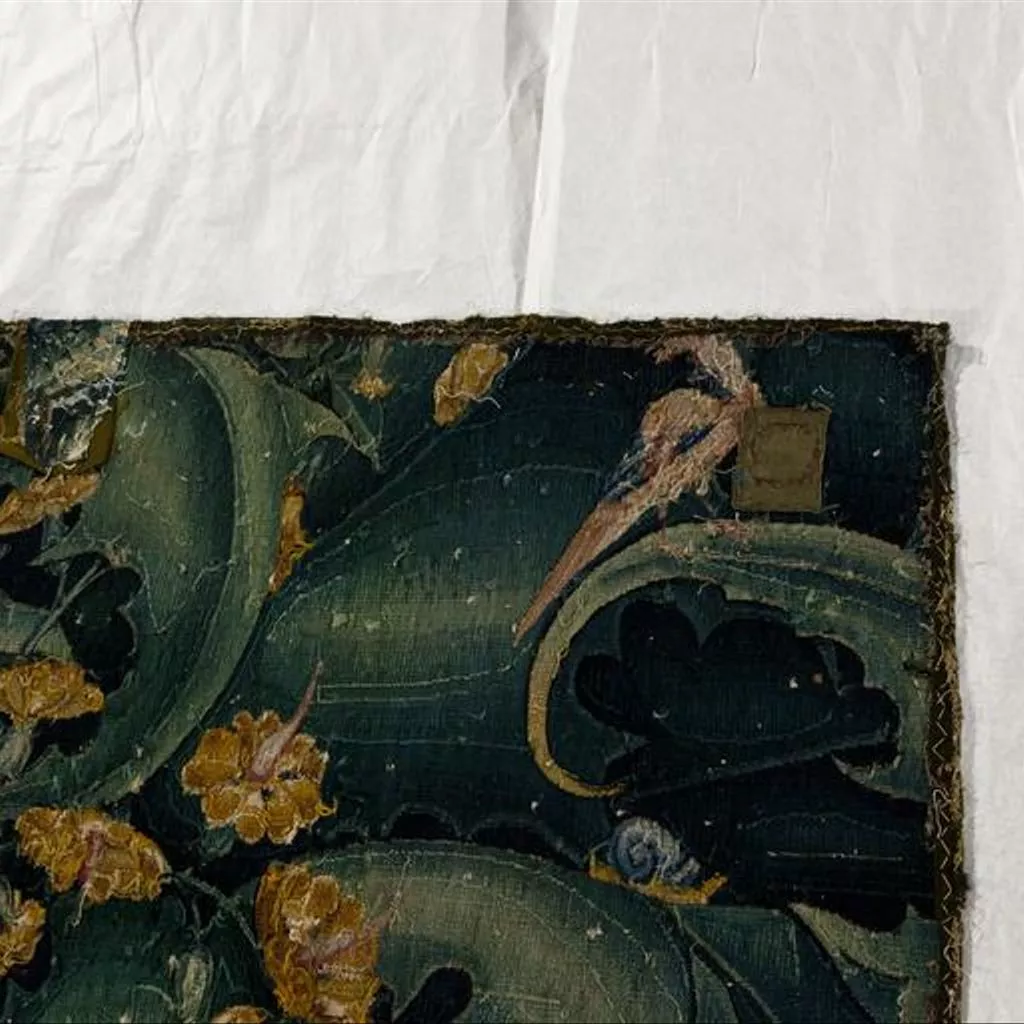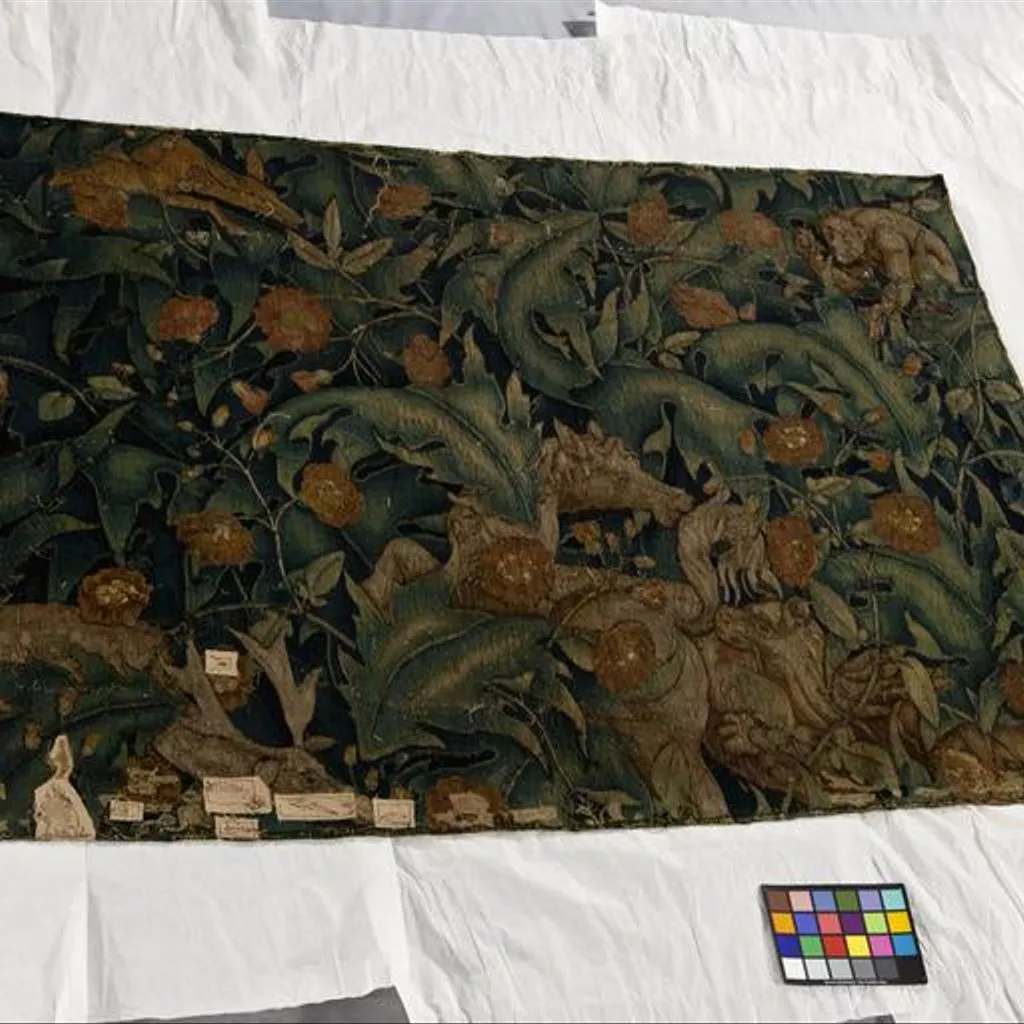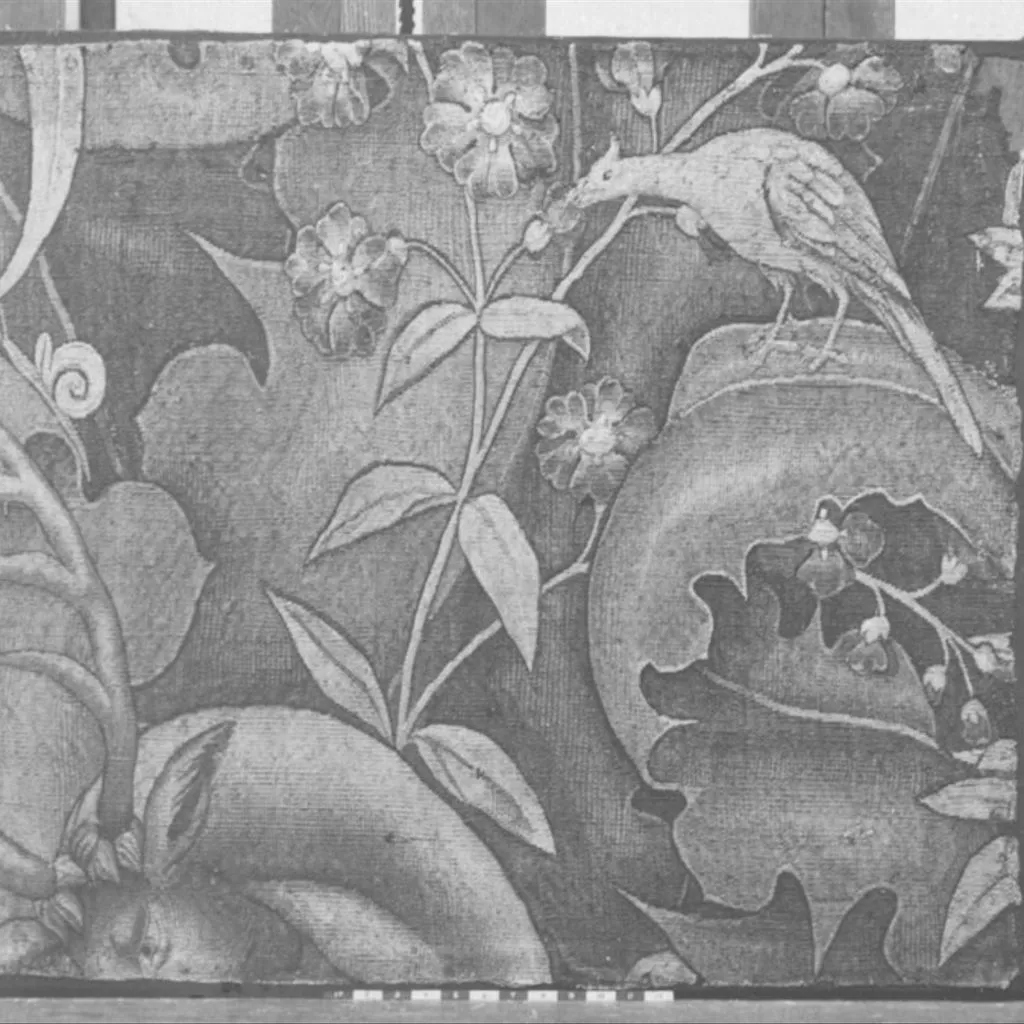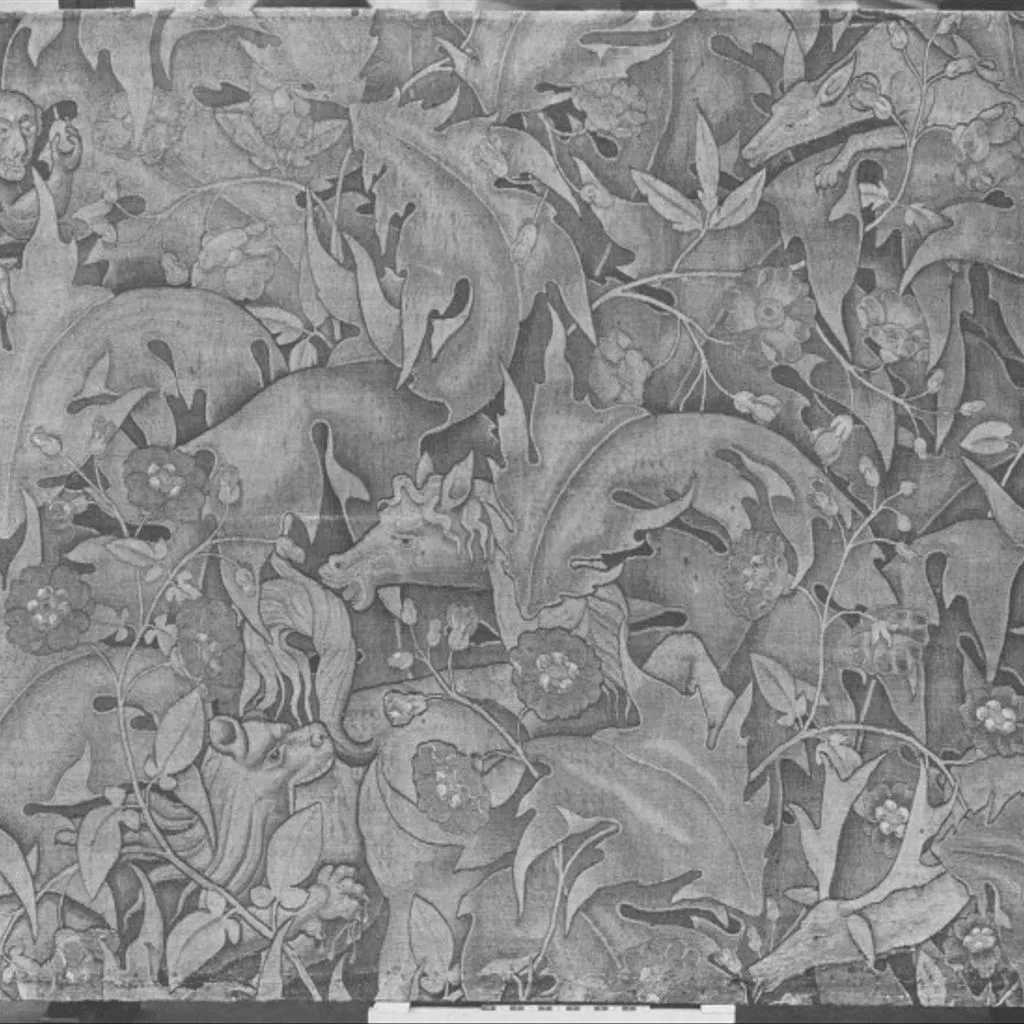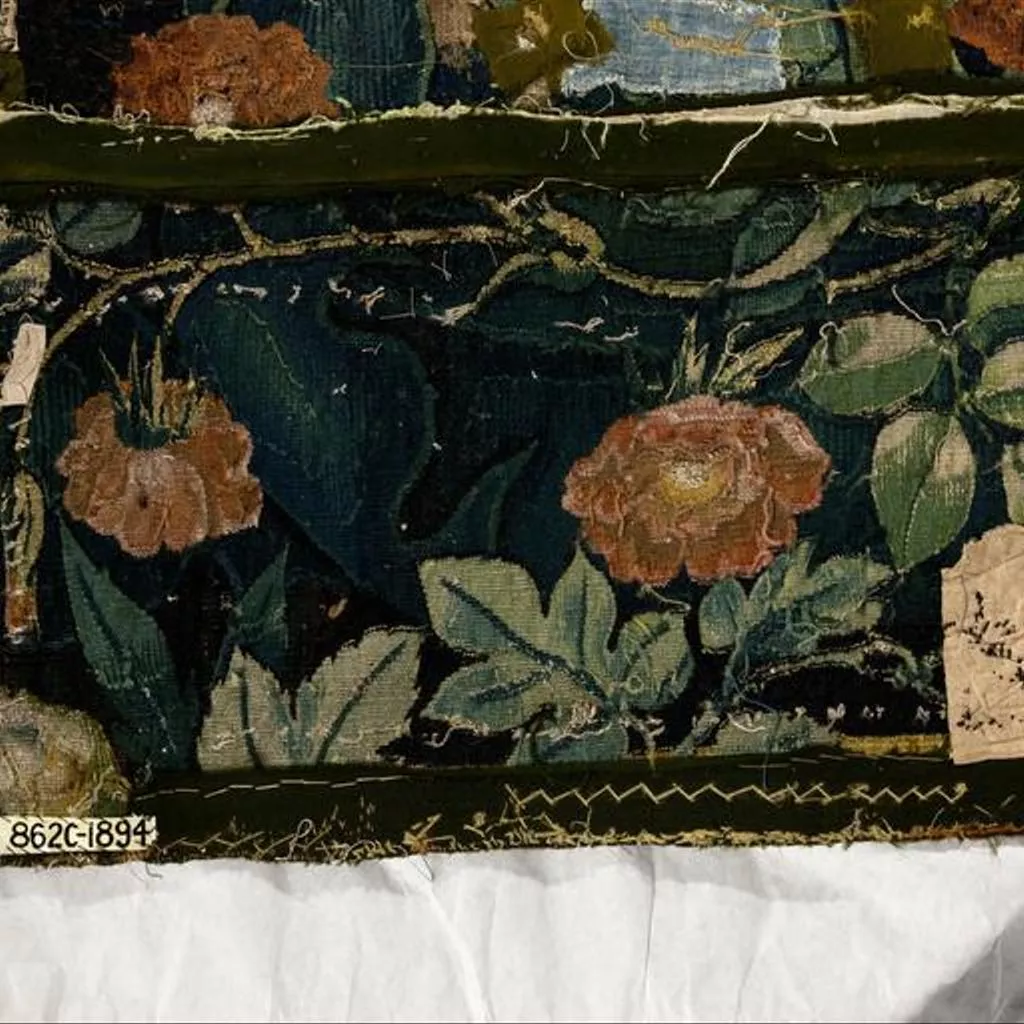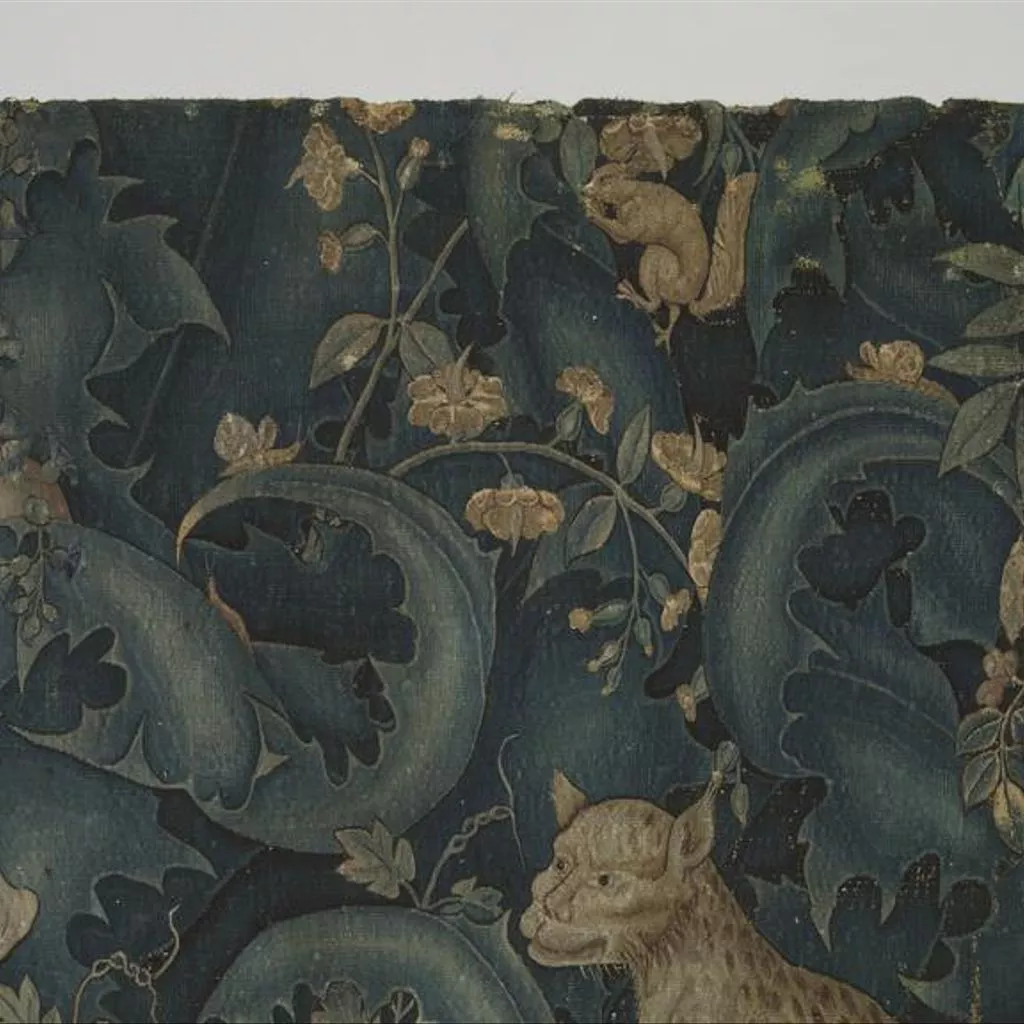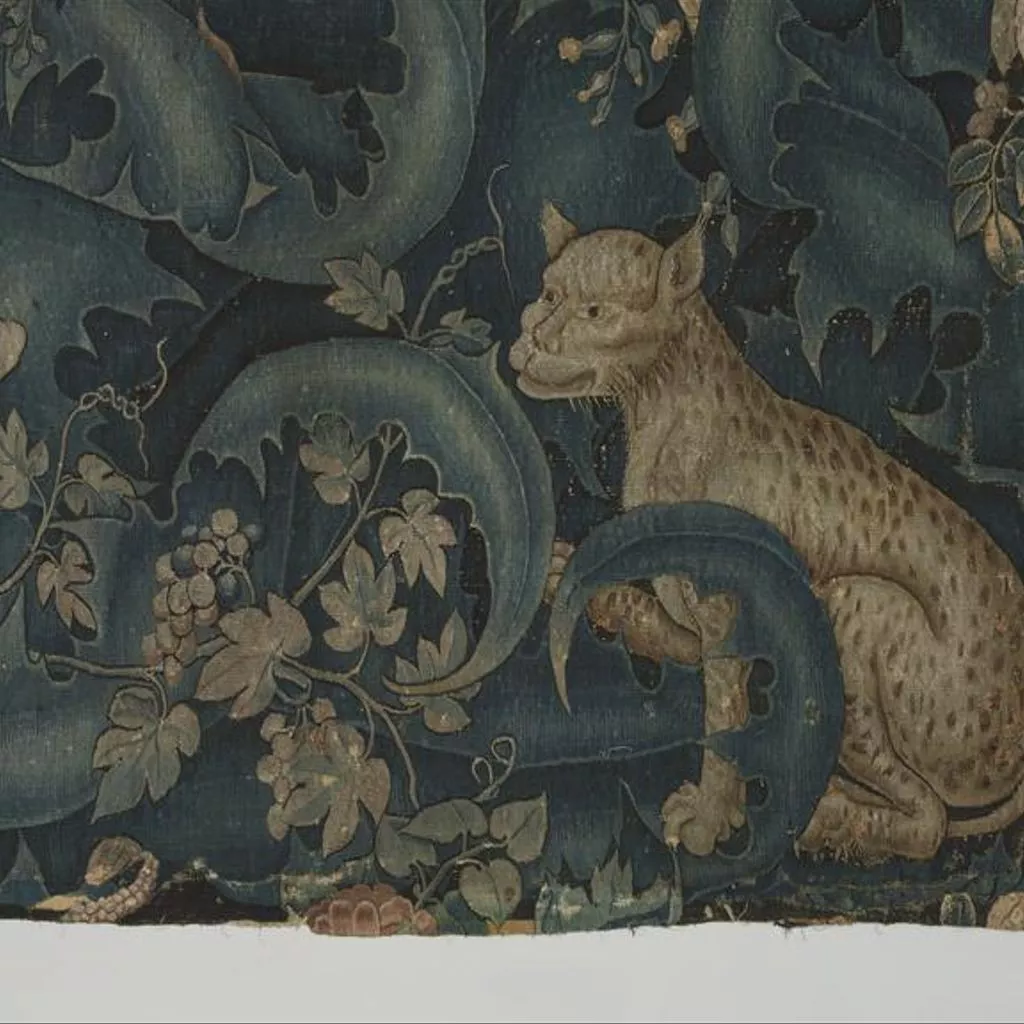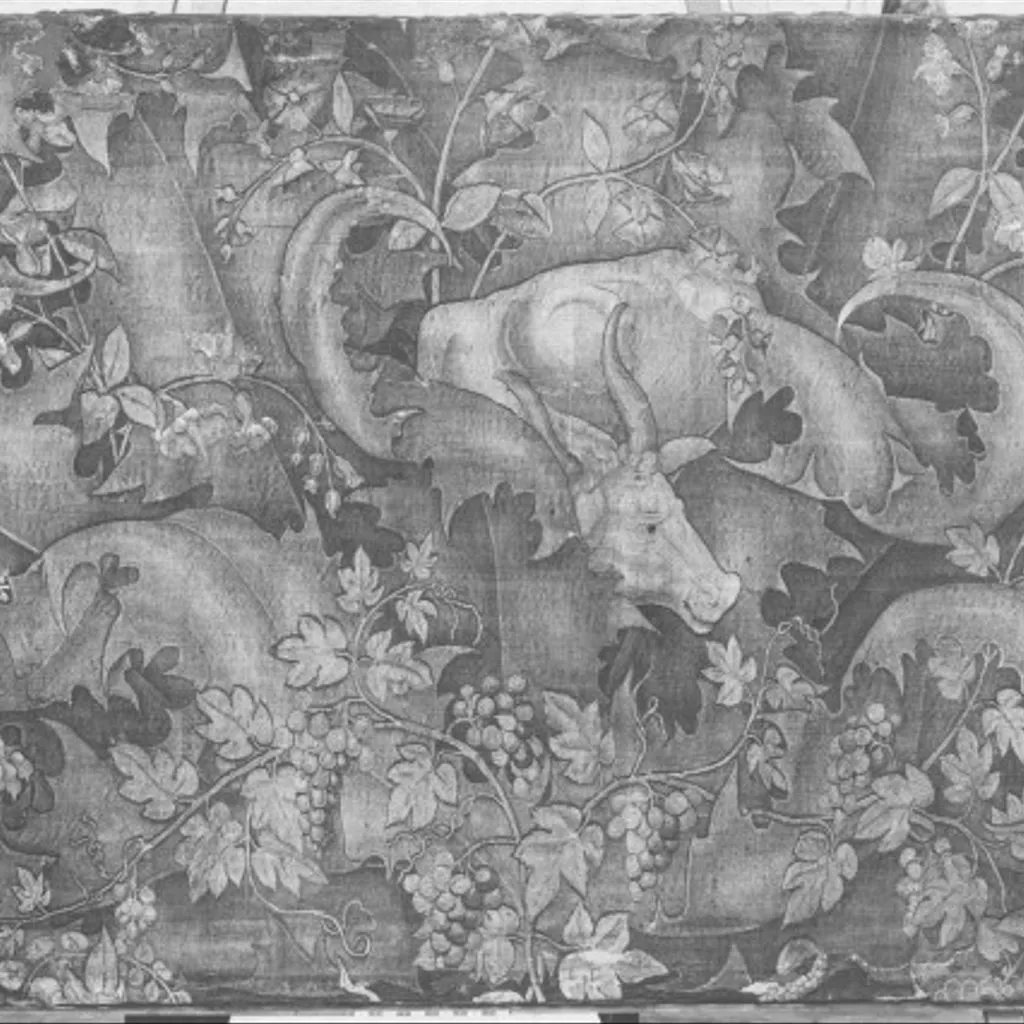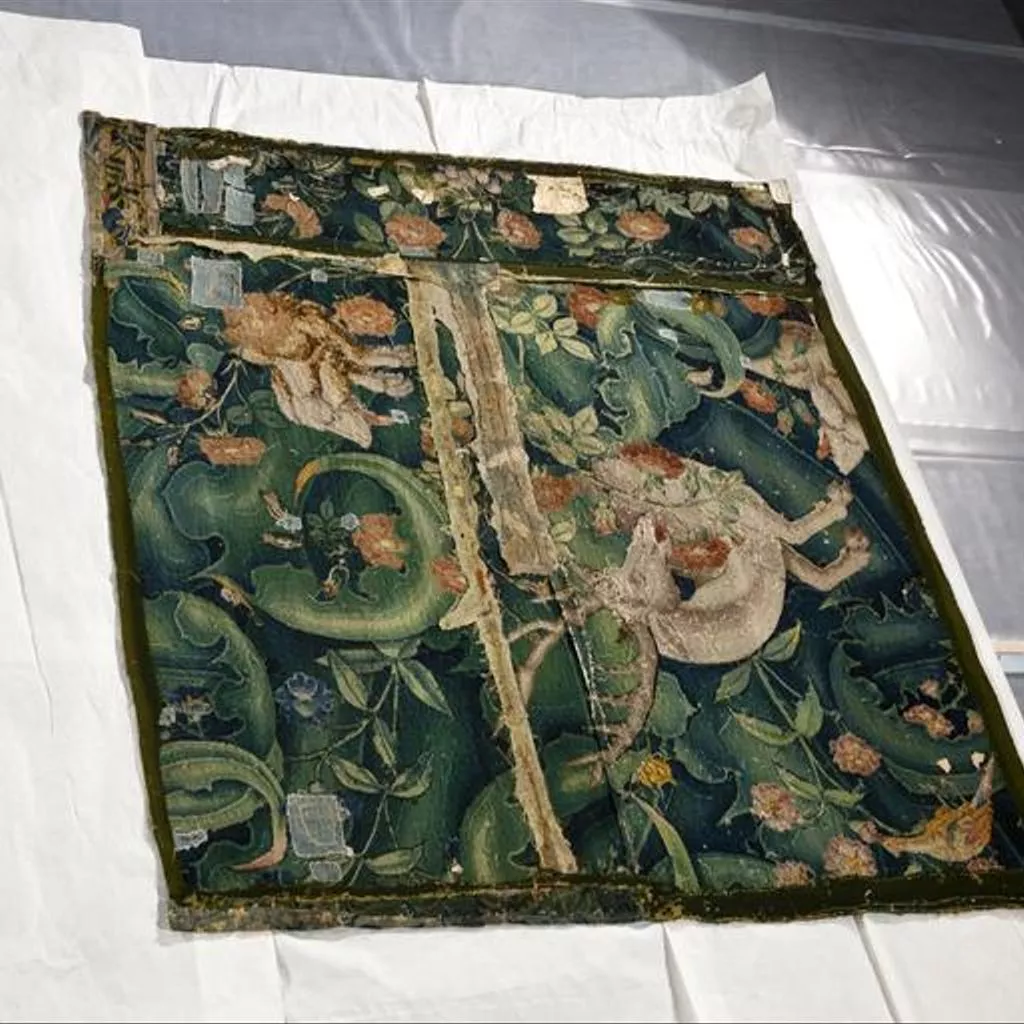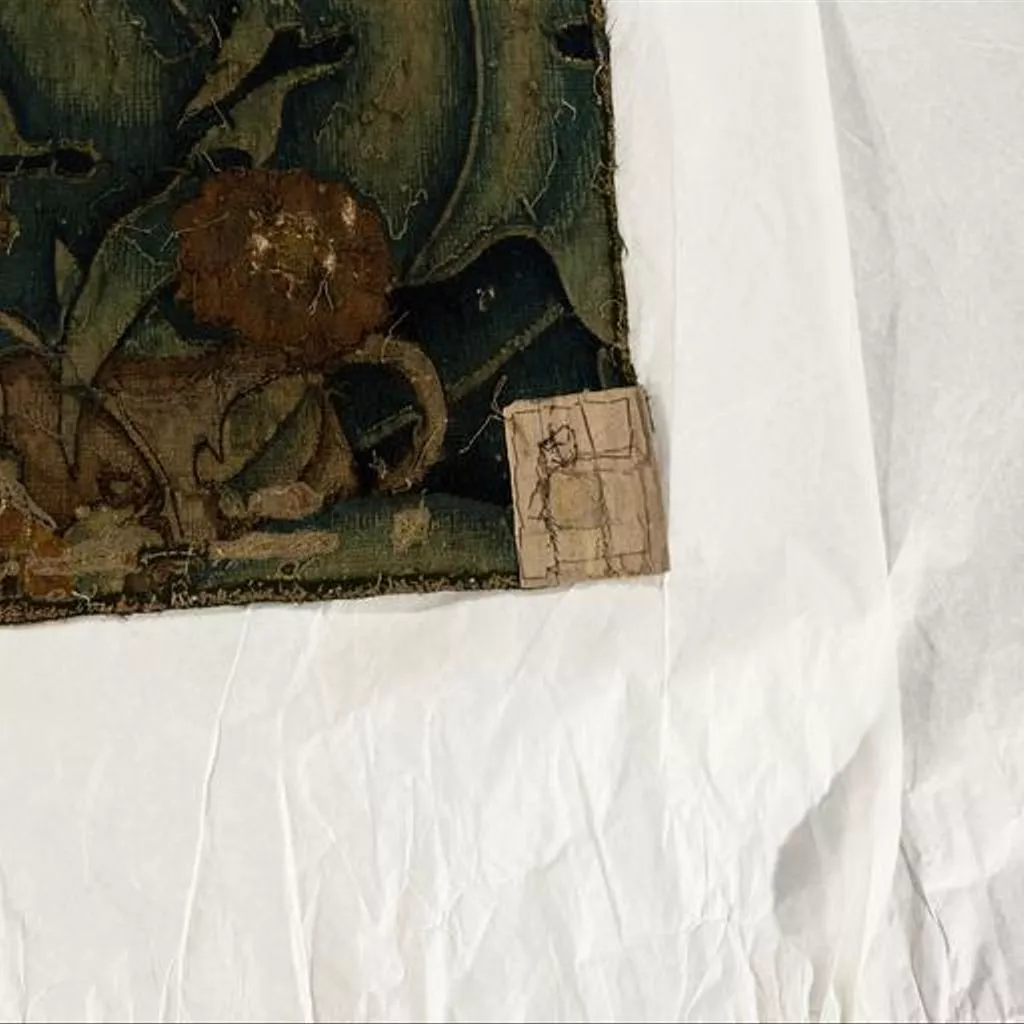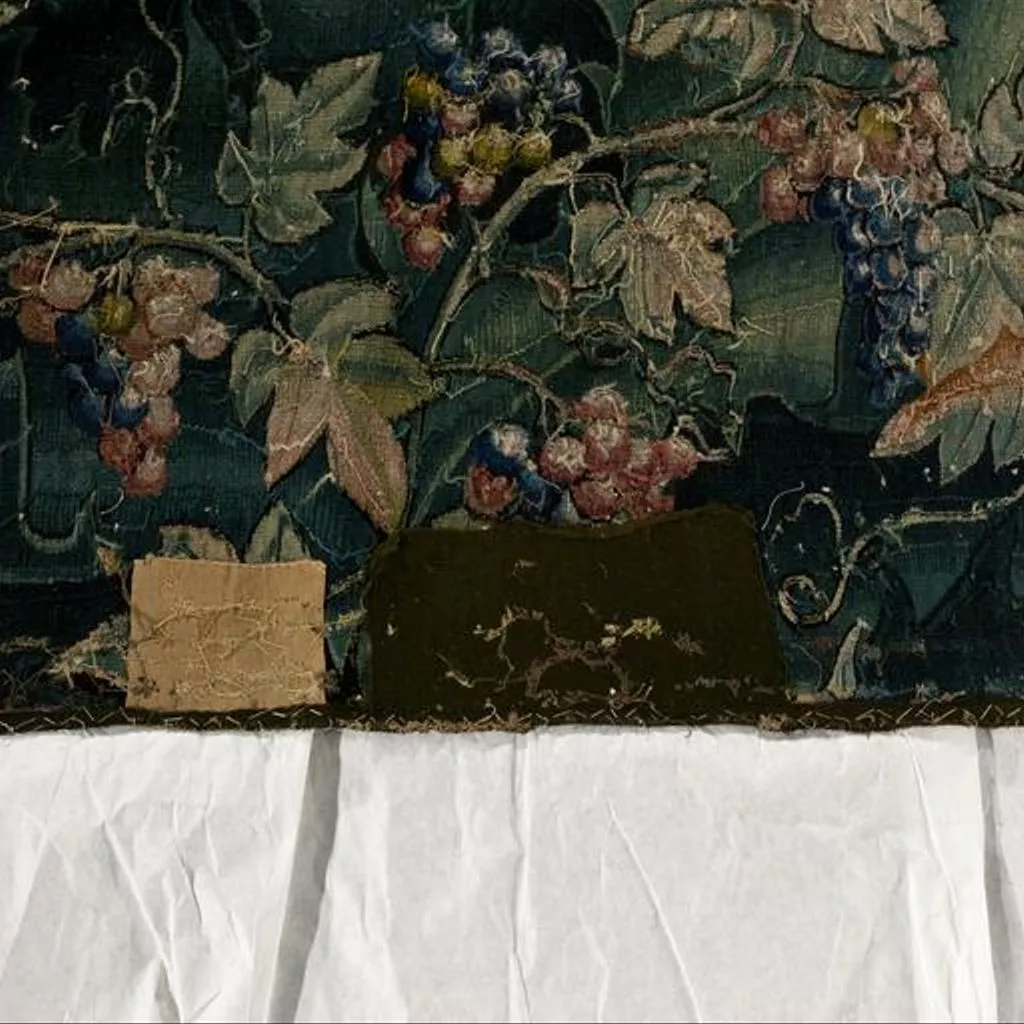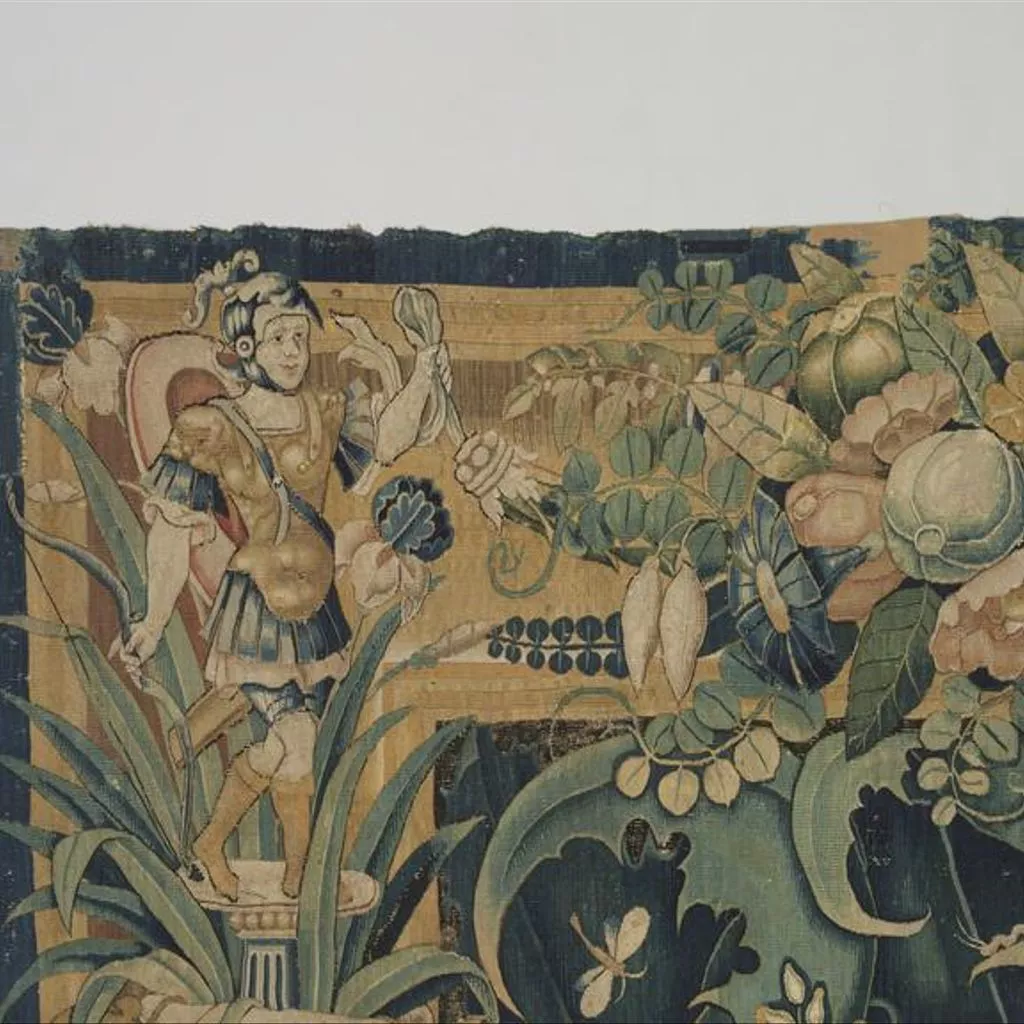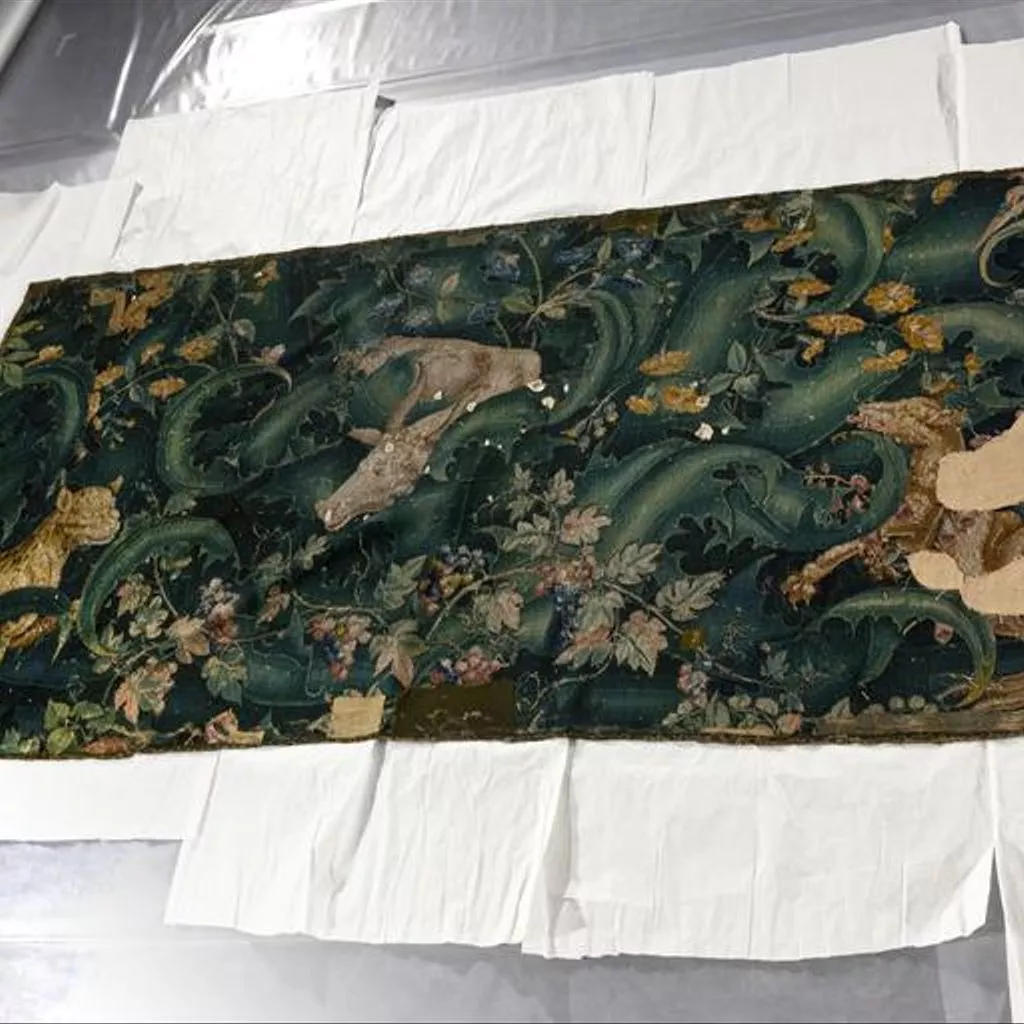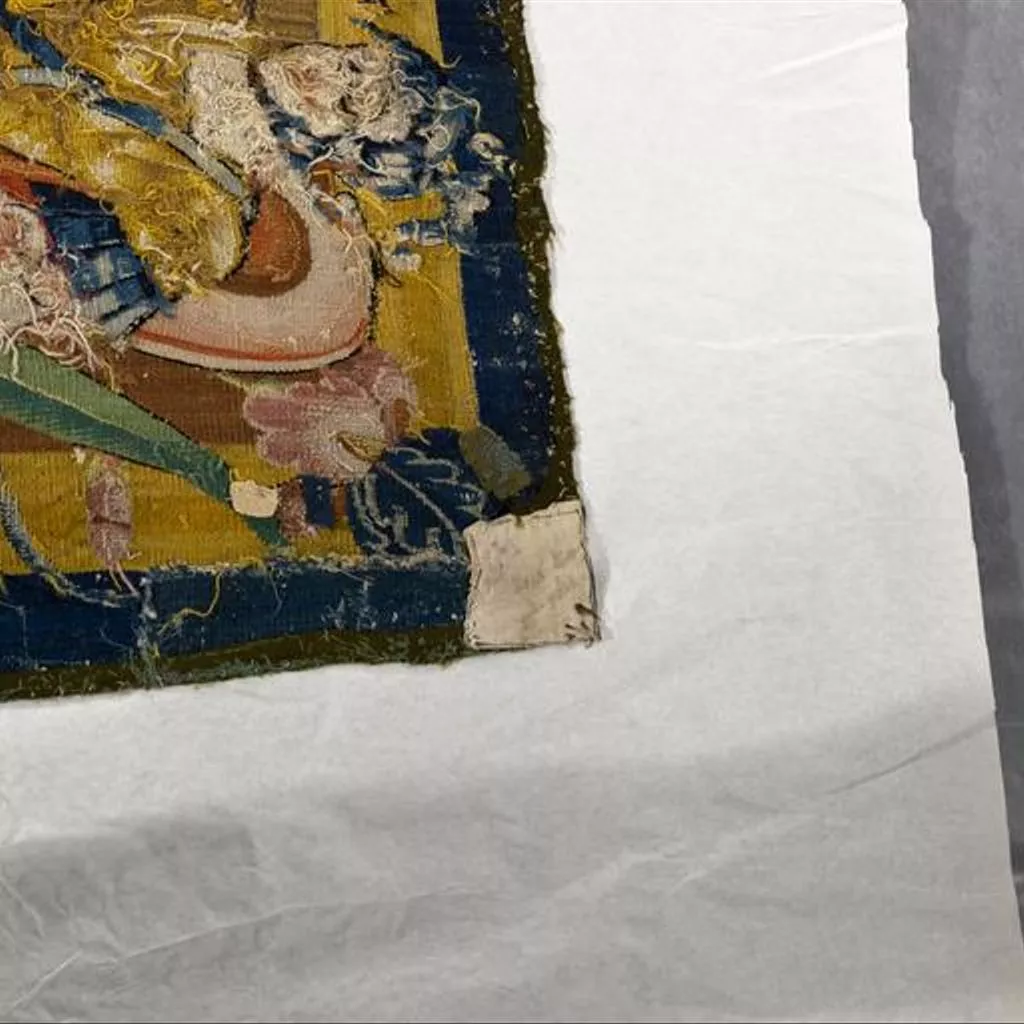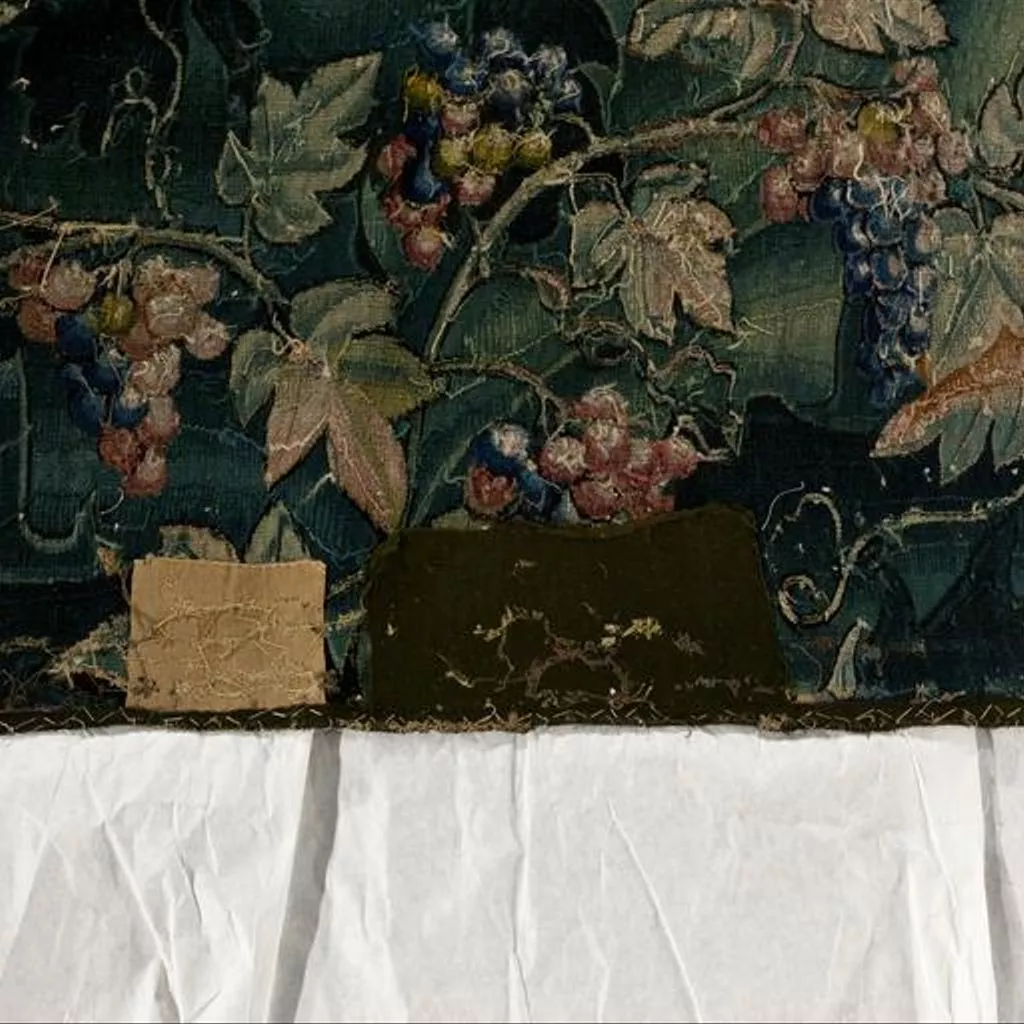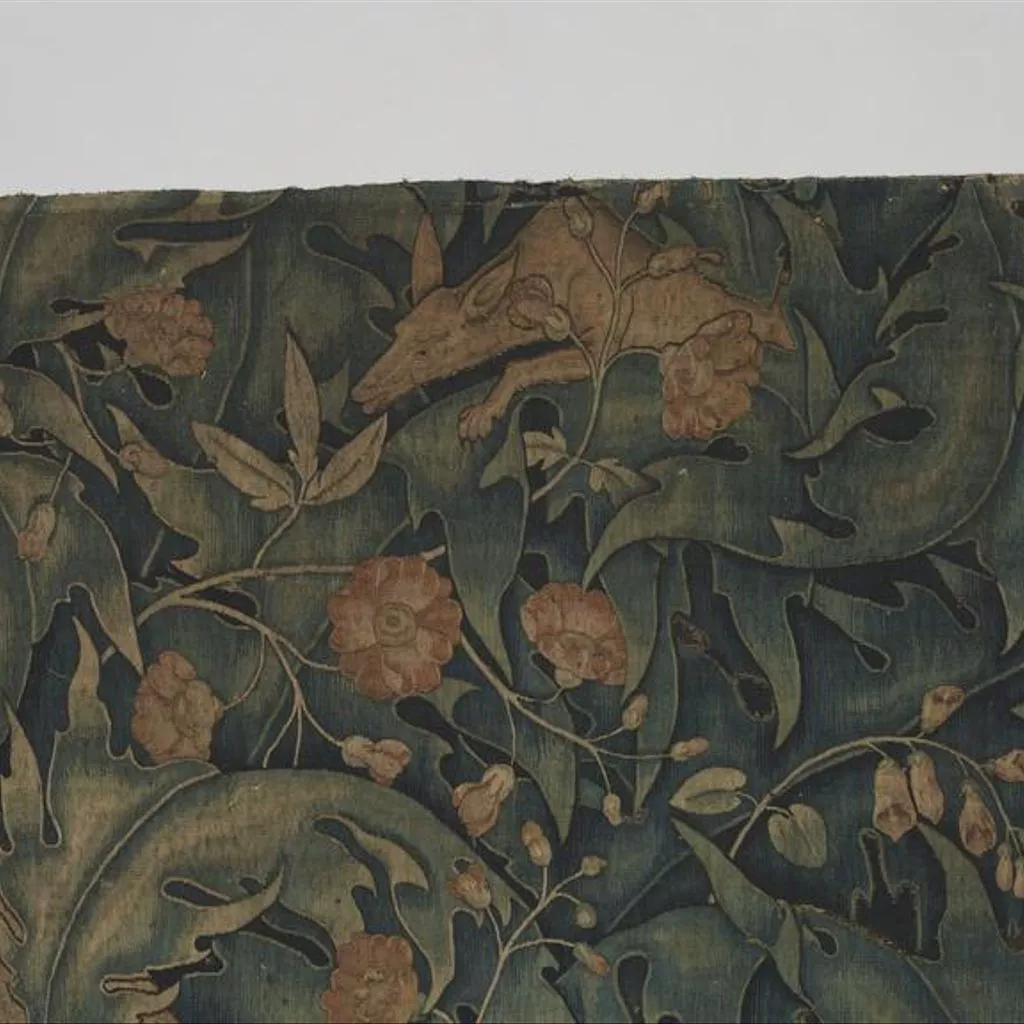Description
These tapestry fragments are known as large leaf verdures. Their design comprises large-leaved plants - probably acanthus - filling the background with stems bearing grapes and flowers, mostly roses, columbines and fox-gloves. This thick greenery is populated by all kinds of animals and birds. In some verdure tapestries the animals are in a peaceful setting and in others, as here, savaging each other.
On one piece a lion is attacking a horse, whilst on another a wolf and a dog are watching an ox or cow. The subjects on some of the smaller fragments consist of dogs chasing stags. Two of the pieces have portions of a border; these must have contained large figures bearing on their heads long stands filled with flowers and fruit, surmounted by smaller figures holding the festoons of fruit and flowers which form the border.
Seven fragments of interlock and slit tapestry weave. 5 warp threads to centimeter. Wool warp and weft, with highlights in silk. Colours chiefly blues, greens and browns. Design of large leaves and stems bearing grapes and flowers, consisting for the most part of roses, columbines and fox-gloves. Various animals and birds are seen amid the leaves. On one piece a lion is attacking a horse, whilst on another a wolf and a dog are watching an ox or cow. The subjects on some of the smaller fragments consist of dogs chasing stags. Two of the pieces have portions of a border, which must have contained at the sides large figures bearing on their heads long stand filled with flowers and fruit, and surmounted by smaller figures holding the festoons of fruit and flowers which form the border.
Tapestry fragments of giant-leaf verdures with animals, birds and insects amid the foliage
References to Verdure tapestries are found from the 14th and 15th centuries. These early Verdures of the Gothic period with strong religious connotations (such as The Lady with the Unicorn) are very different from the image the word verdures conjures up in people's minds - a landscape of flourishing green vegetation. However, we know from old documents that tapestries containing other subjects and colours than green vegetations were also called Verdures. There are numerous Verdures in Henry VIII's inventory, and French inventories. In the 17th century we find reference to landscapes and views, with birds, animals and orange tree in tubs. Clearly, since such a variety of tapestries were called Verdures, we can assume that as long as the main subject of the tapestry was a landscape or greenery it was considered a Verdure.
The drawing of the figures and the telling of the story in figurative and narrative tapestry constrained the artists, no such restritcions applied to Verdures. Verdures gave the designers and weavers great scope and artistic freedom. They could weave tiny trees with huge leaves, imaginary plants and fictitious animals.Very few plants and trees are positively identifiable. The Overgrown or Wild Garden, generally known as Large Leaf Verdure was the most fascinating subject as it allowed the greates artistic freedom for the weaver. Although these tapestries appear to show part of a forest, in fact, they are meant to be part of the garden on an estate. Many of them contain columns and balustrades to indicate that they are near the house. The whole tapestry is covered with dense vegetation with giant leaves. Some of the plants are imaginary while others are clearly identifiable. Animals and birds force their way through the thicket of leaves and flowers. In some tapestries the animals are in a peaceful setting and in others savaging each other. While very little concern is shown for overall depth and proportion, the alrge leaves are executed with exquisite care so that they create a sophisticated three-dimensional effect (Sternberg, Charles,Verdure Tapestry (London: Vigo-Sternberg Galleries, 1983).
The splendid large-leafed verdures sometimes bear the Oudenarde mark, sometimes that of Geraardsbergen or Enghien, and most are unmarked. They must have been woven in turn in these three adjacent centries, depending upon the availability of looms and fluctuations in prices. Oudenarde was from the start (at least fifteenth century) highly commended for its 'green work' (Delmarcel, G. Flemish Tapestry (London: Thames & Hudson, 1999)

































































